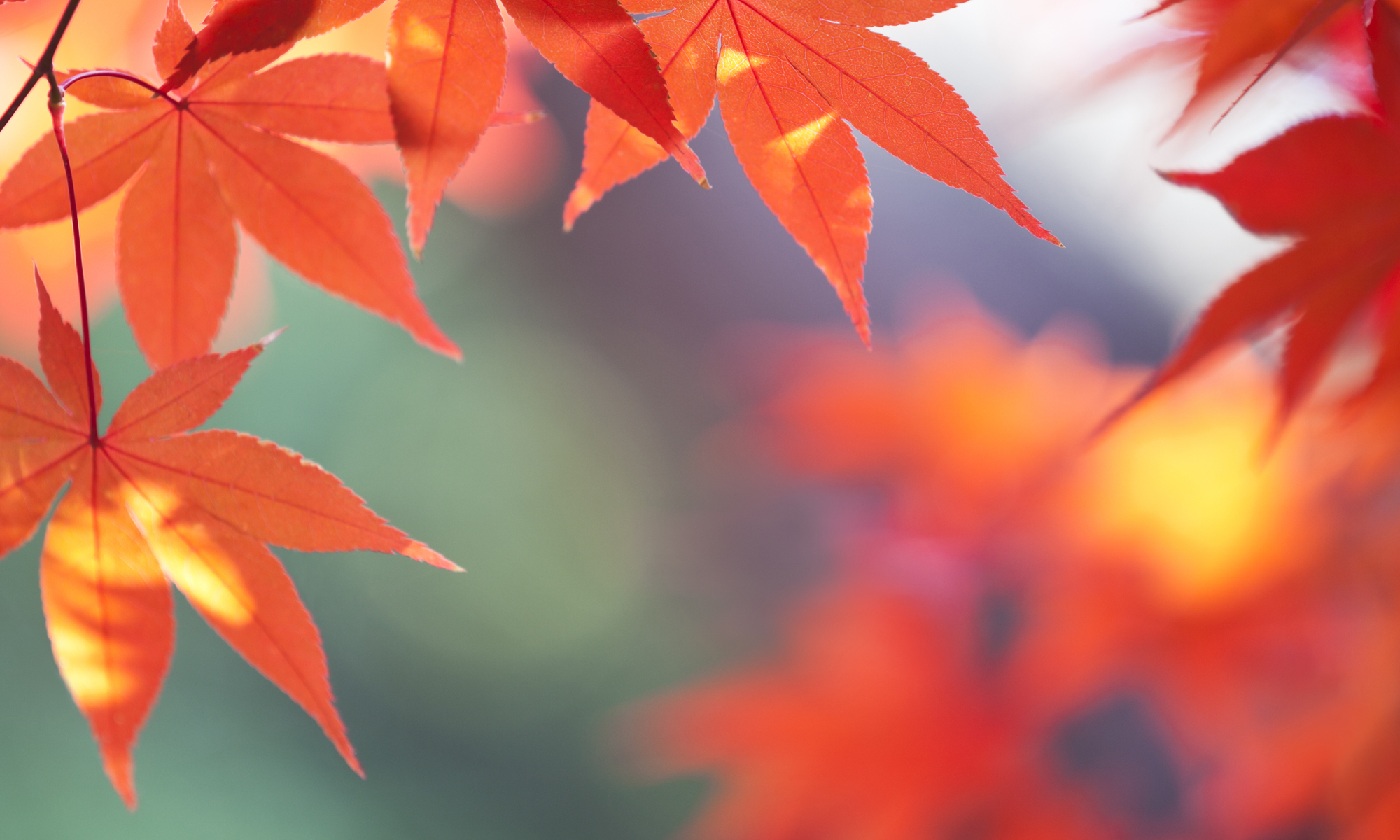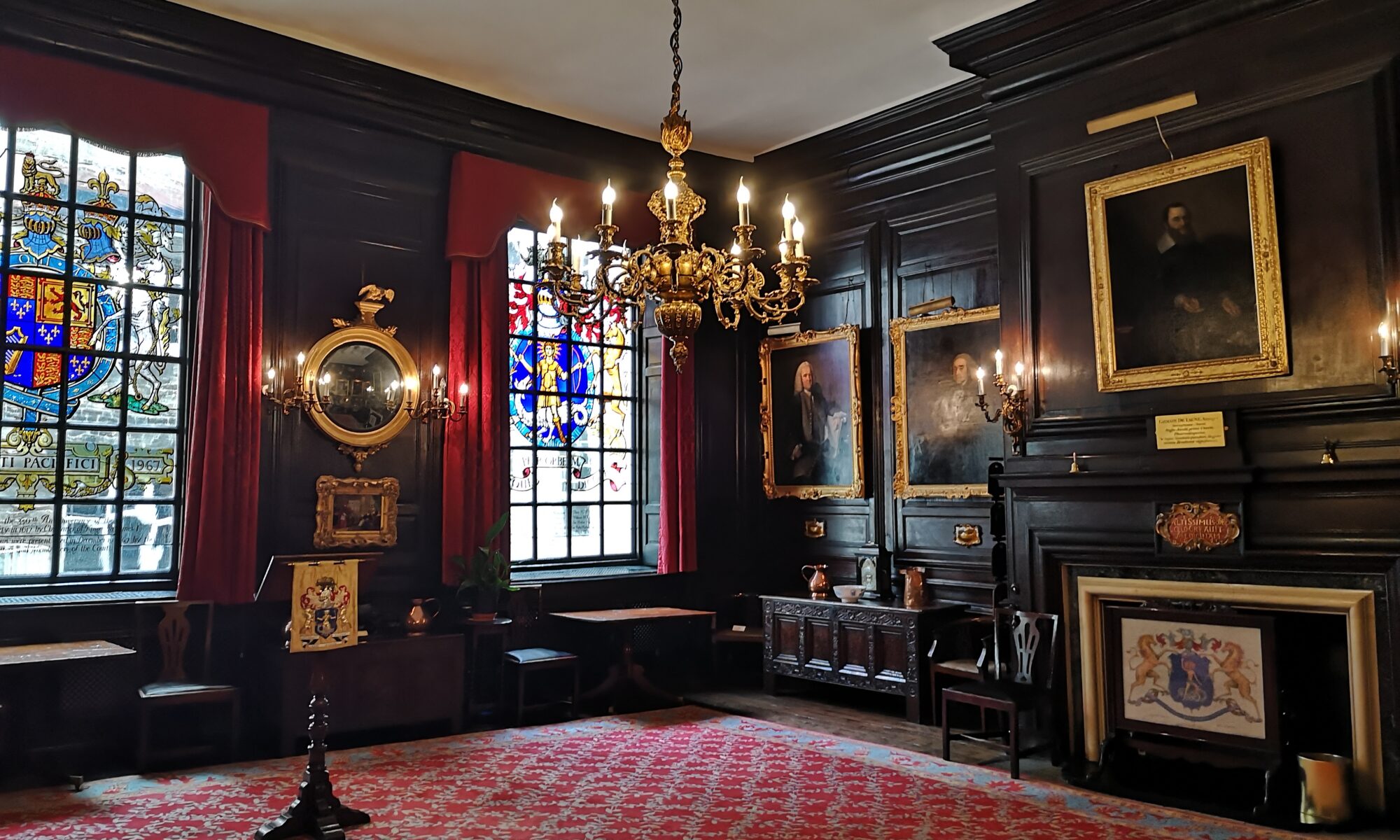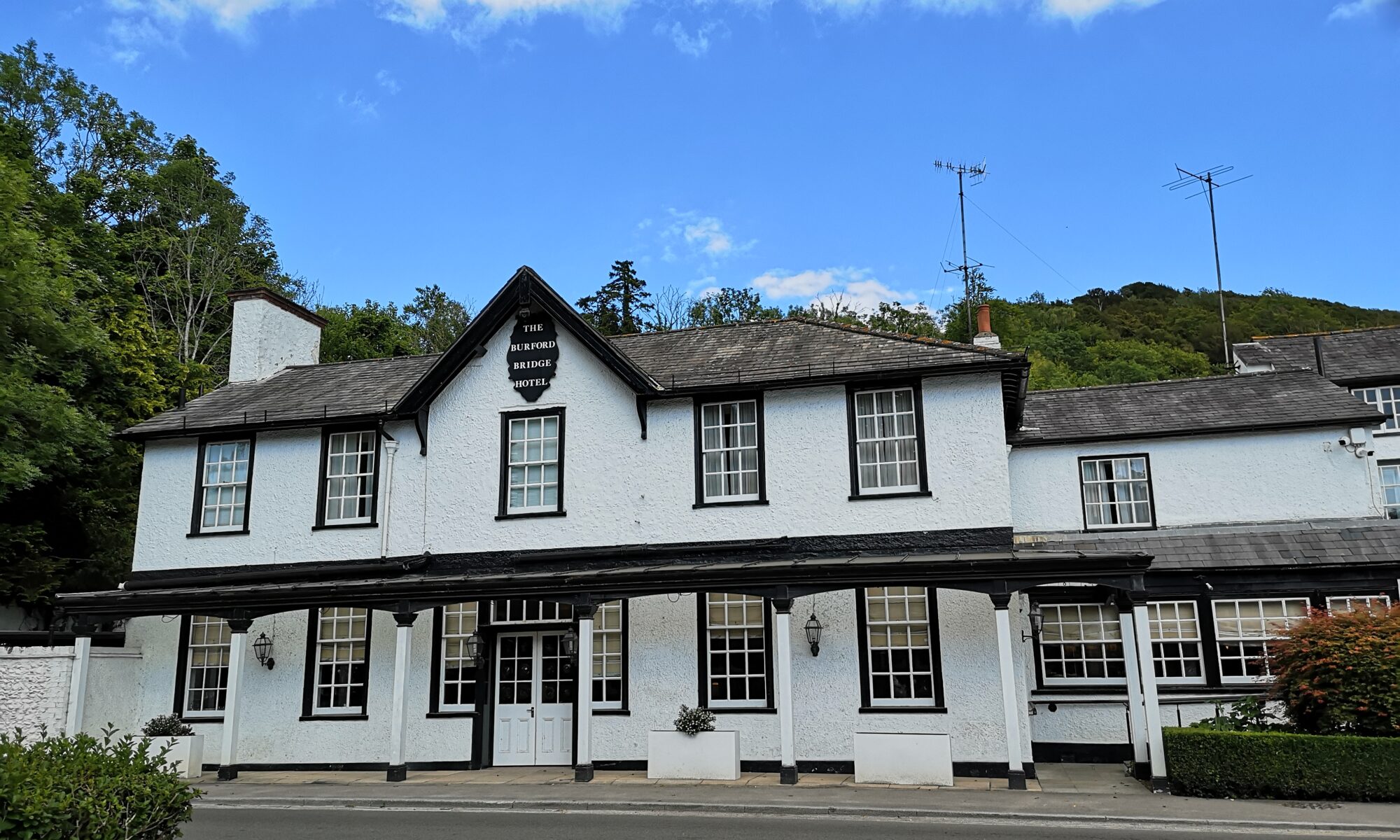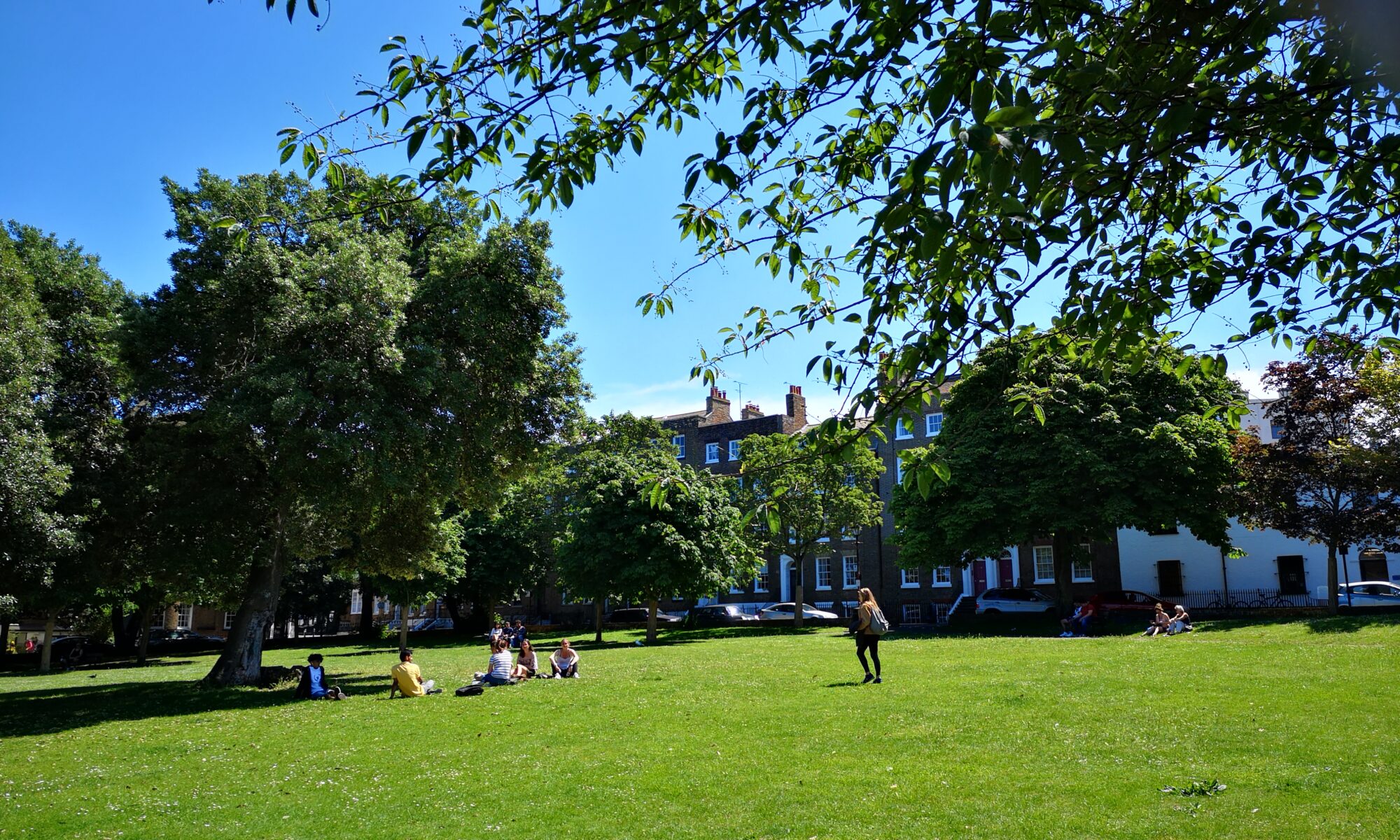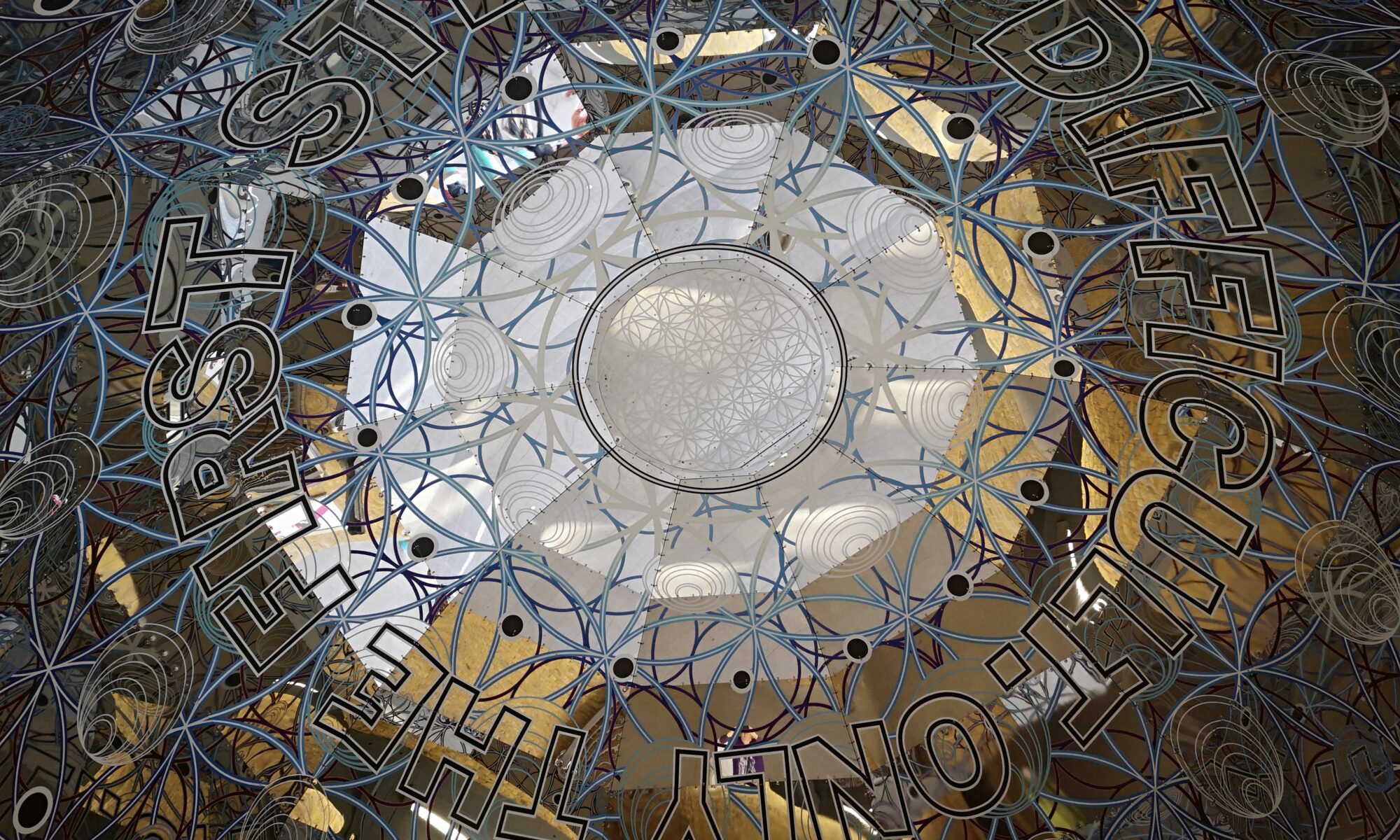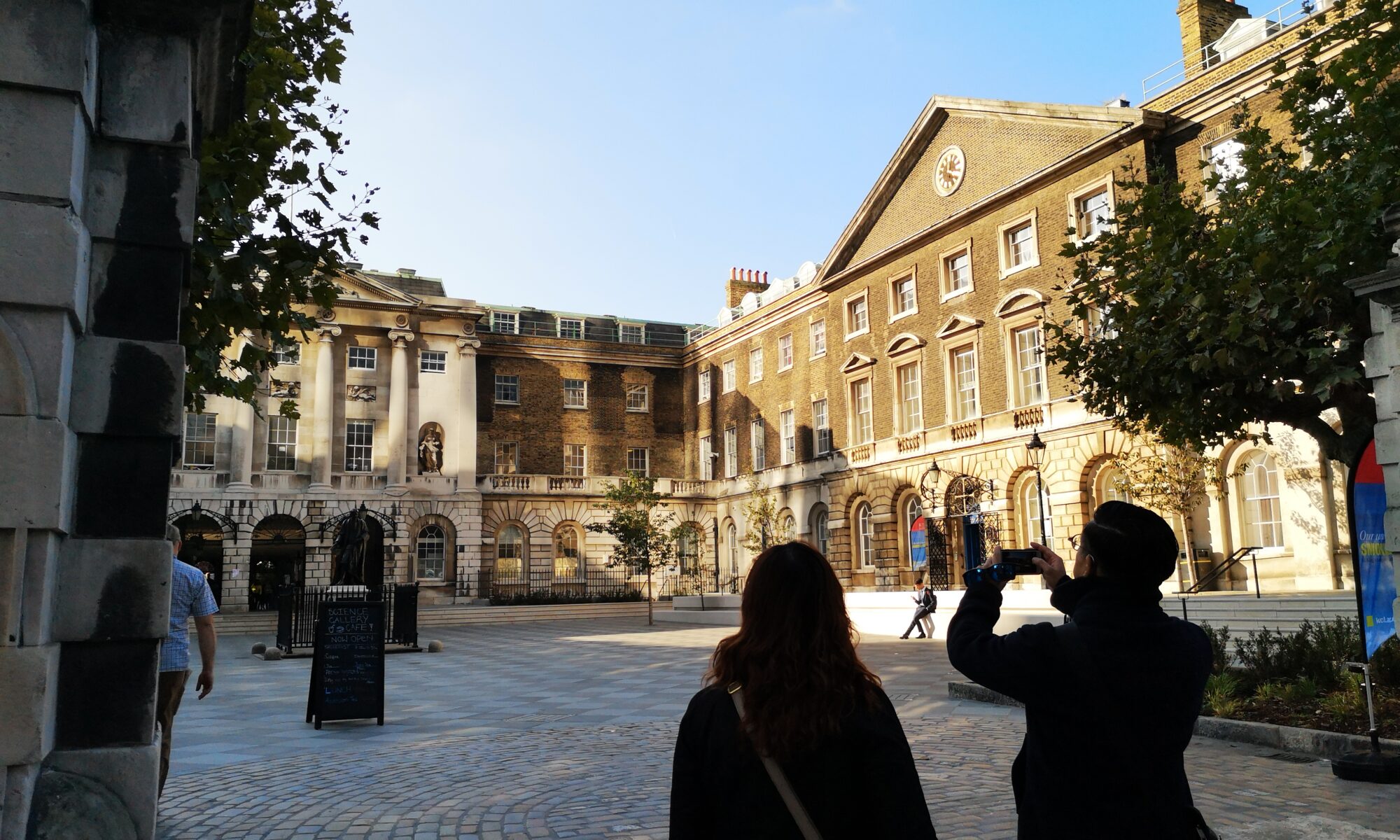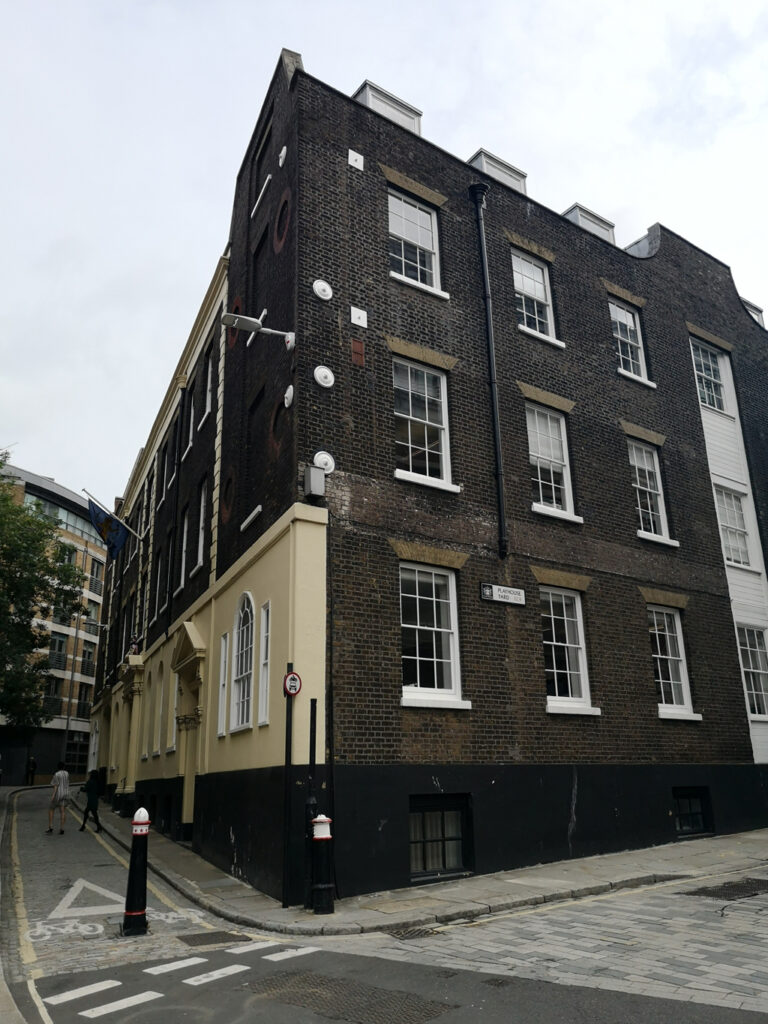
Apothecaries' Hall, looking up Black Friars Lane. 
The entrance to Apothecaries' Hall. 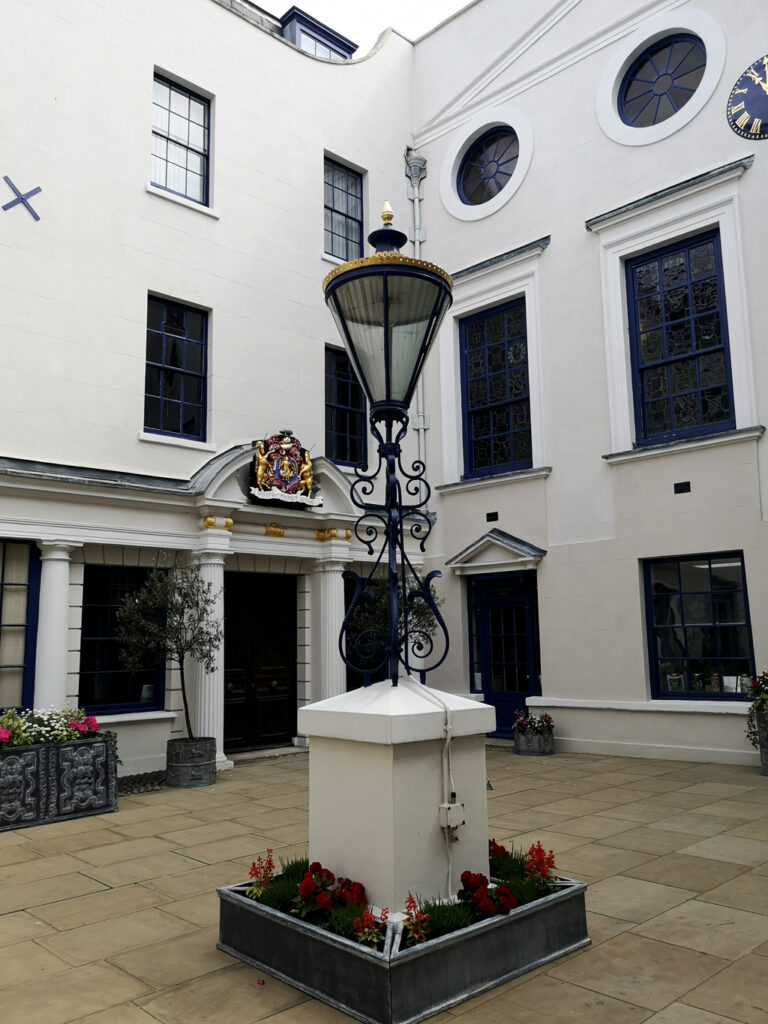
The courtyard. 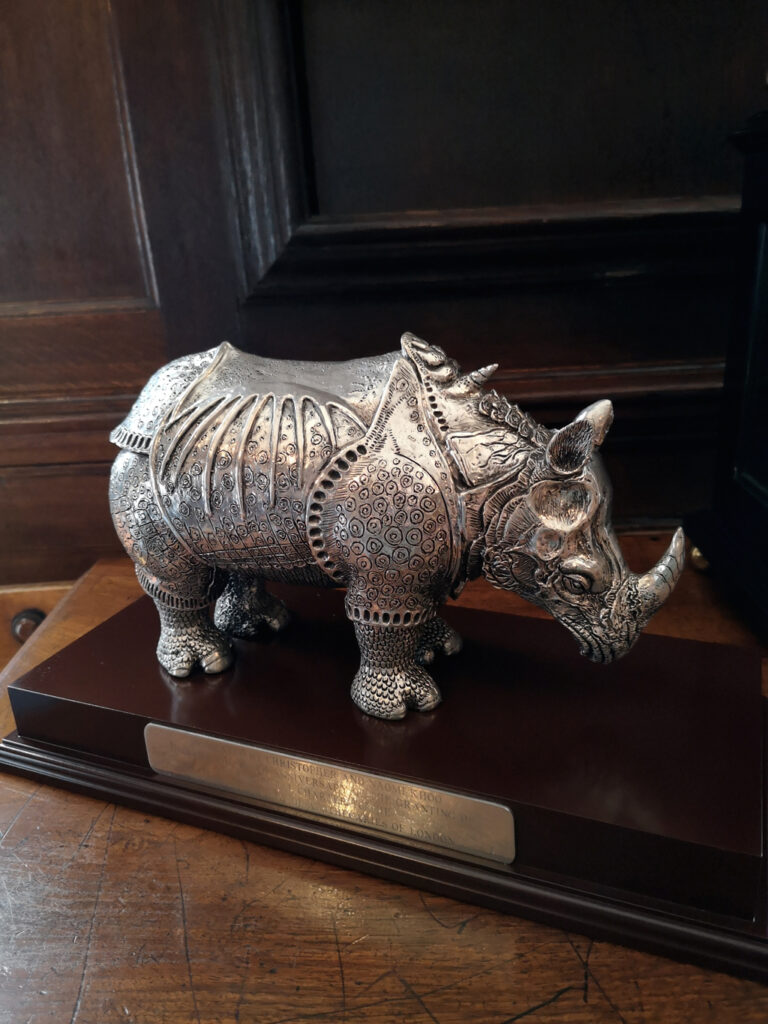
One of the Society's symbols is this rhinoceros, as fancifully imagined by Albrecht Durer. 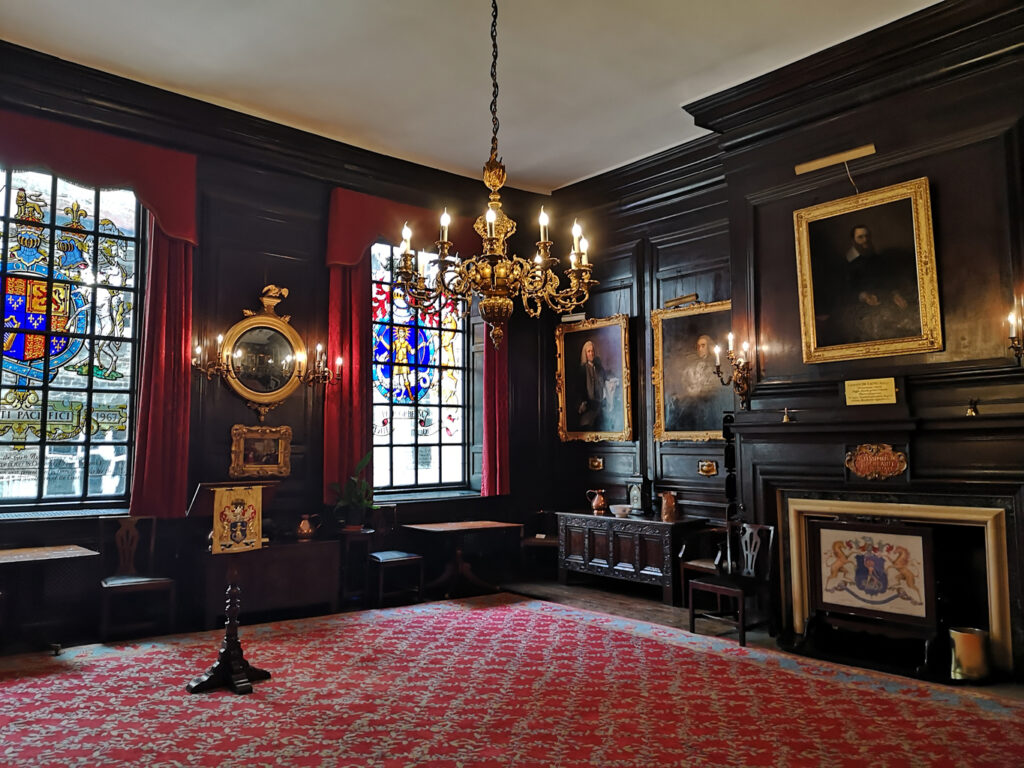
The Court Room, where any ceremony would have taken place, awarding Keats his licence. 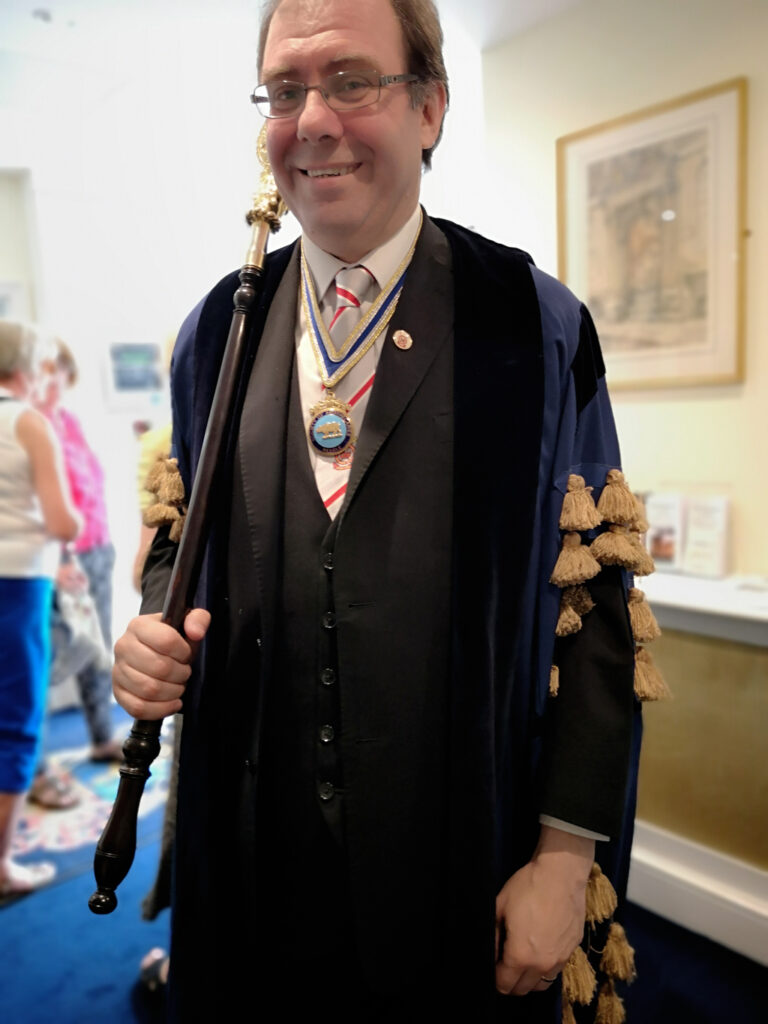
Don't mess with the Beadle!
He's a lovely chap, but he wields a mighty mace.
Apothecaries’ Hall, City of London
Following his medical training, John Keats applied for a licence to practice as an apothecary. He was examined at Apothecaries’ Hall and the licence was granted.
The Keats Connection
An apothecary in Keats’ time was equivalent to our general practitioners today, so when he applied for and was granted a licence – the LSA (Licentiate of the Society of Apothecaries) – this enabled him to practice medicine as a doctor.
The Apothecaries’ Act governing this licencing had only been introduced in August 1815, just under a year before Keats made his application; he was the 189th candidate to apply, and the 168th to pass. The licencing was administered by The Worshipful Society of Apothecaries, a City Livery Company incorporated in 1617. The Society has occupied the Hall in Blackfriars since 1632.
To qualify, Keats had to provide testimonials proving his medical training, including:
- his apprenticeship for five years with Thomas Hammond in Edmonton;
- the lectures he had attended at Guy’s Hospital; and
- his six months of work on the wards at Guy’s Hospital.
Keats attended Apothecaries’ Hall on 25 July 1816, along with six other candidates. In his biography of Keats, Andrew Motion tells us that Keats would have sat for four papers: a translation of the pharmacopoeia (Latin); the theory and practice of medicine; pharmaceutical medicine; and materia medica. Keats appeared before the Court of Examiners, with all twelve of the Court present, and was verbally examined by one of them – the Royal Apothecary, Everard Brande. His application was duly approved.
The examination would have taken place in the Great Hall. Any subsequent ceremony in which he was given the award would have taken place in the Court Room.
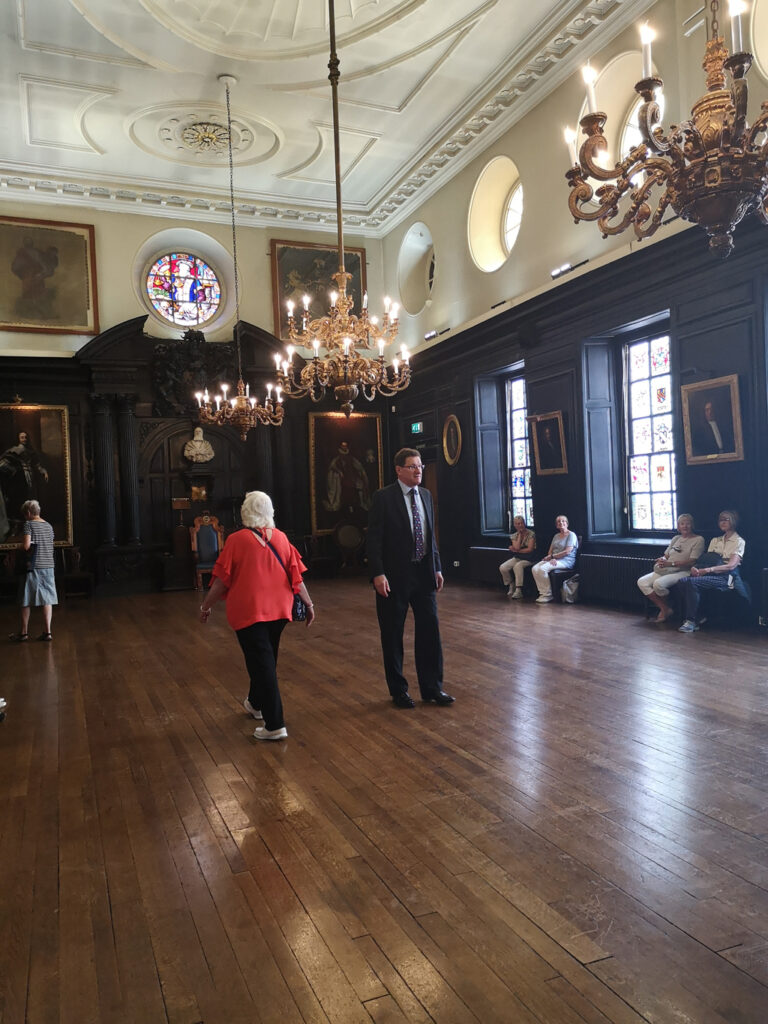
The LSA certificate allowed Keats to practice “in the country”, which meant he could not practice in the City of London nor within ten miles of it. He couldn’t have practised in Edmonton, for example, as that’s only about nine miles from the city.
Andrew Motion gives the context for this as Keats already experiencing doubts about his future in medicine. The fee of six guineas to practice in the country was cheaper than the fee of ten guineas to practice in the city, and so he chose the less expensive option so as not to risk wasting any more money than he had to. Whether he meant it or not, he announced that he would prefer to practice in the country outside London.
Keats took a holiday in Margate with his brother Tom after qualifying, and then continued to work and train at Guy’s Hospital for a few months. If he wanted to pursue a career in medicine, he could have gone on to qualify as a surgeon as well. However, towards the end of 1816 he finally decided to quit medicine and concentrate on poetry instead.
History
The Society has a fascinating history, with links to other notable people such as Nicholas Culpeper (an independent practitioner, often at odds with the Society!) and Agatha Christie (who passed the Assistants’ Examination in 1917, having learned much about poisons). Christopher Penfold, who passed the LSA in 1833, went on to found Penfolds Wines in Australia. The Society’s dinners are greatly enhanced by this connection! Significantly, in 1865, Elizabeth Garrett Anderson qualified as an apothecary, thereby becoming the first woman to receive a medical qualification in the UK.
The Society made and sold medicines at the Hall, with a shopfront on Black Friars Lane, between 1672 and 1921. There is still a doorway, to the right of the main entrance, labelled “Warehouses”. The Society founded the Chelsea Physic Garden, and supplied medicines to the East India Company and to the First Fleet.
And those are only a few highlights!
The Hall itself has plenty of history, too, dating back before the Society bought it in 1632. The Court Room, for example, was where Catherine of Aragon was examined (in 1529) about her marriage to Henry VIII, after he’d sought an annulment. There is a small painting of the scene on the wall between the two windows.
Today
The Worshipful Society of Apothecaries continues as busy as ever, and is still licensing doctors to practice medicine. The Society has founded two Faculties – one in the History and Philosophy of Medicine, and the other in Conflict and Catastrophe Medicine – and can award eight different Diplomas.
While the Hall is not generally open to the public, you can contact the Clerk’s office and ask about tours. When I did so during a recent trip back to England, they very obligingly let me tag along with a group who had booked a tour one morning. Thanks are due to the Society and to the tour group itself for their kind welcome!
Details
- Address: Black Friars Lane, London EC4V 6EJ
- Tube: Blackfriars on the Central and District Lines
- Blackfriars for National Rail
- Opening hours: The Hall is not open to the public without prior arrangement.
Links
- The Worshipful Society of Apothecaries official site
- The Worshipful Society of Apothecaries official account on Twitter
- The Worshipful Society of Apothecaries page on Wikipedia
- Apothecaries’ Hall official site as an event venue
- Apothecaries’ Hall, London page on Wikipedia
gallery | Burford Bridge
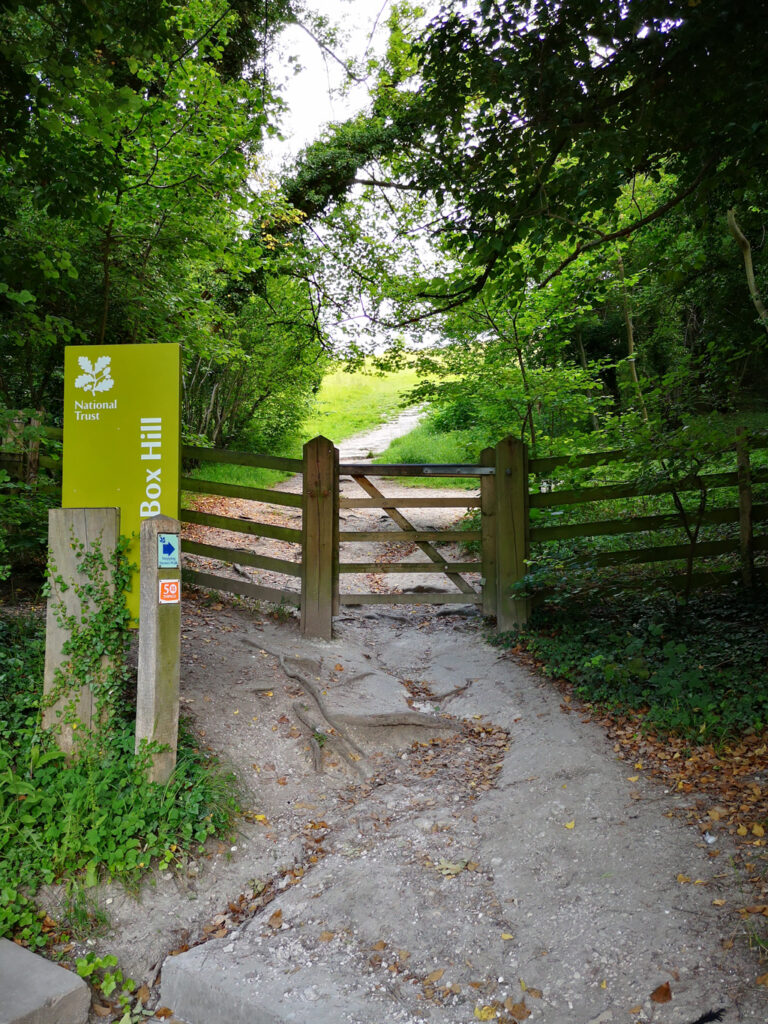
The pathway leading up from just to the left of the hotel. I assume this is where Keats started up that evening. 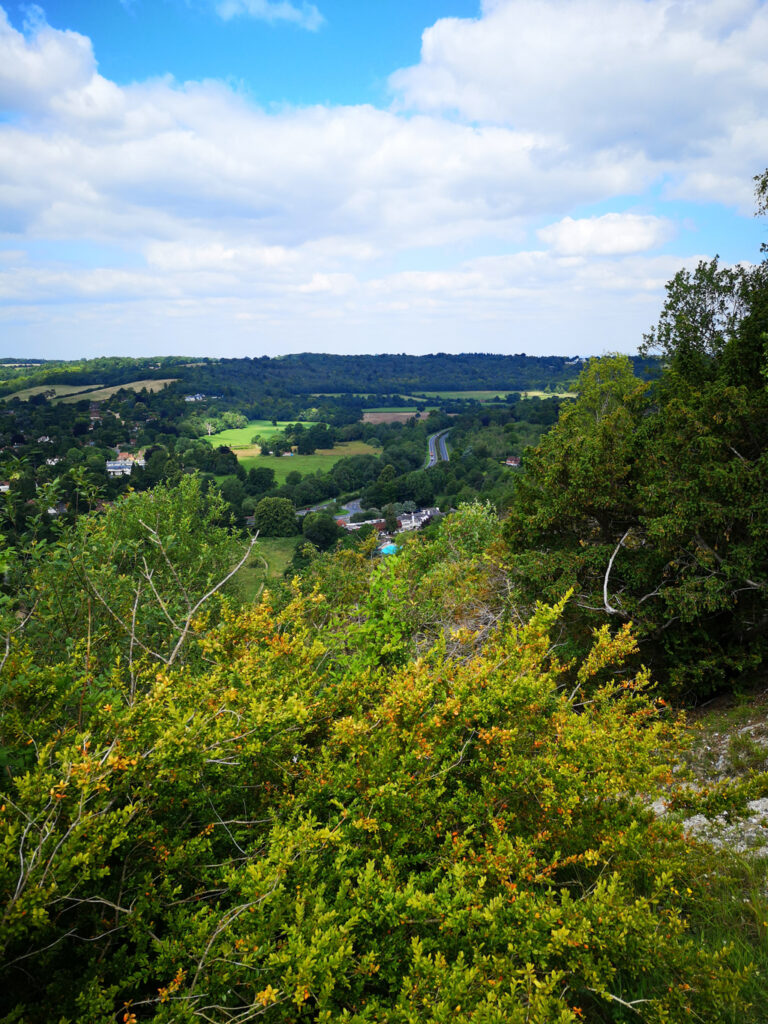
The reverse angle shot: From Box Hill, looking down on the hotel. You can spy the bright blue of the swimming pool in the centre of the photo. 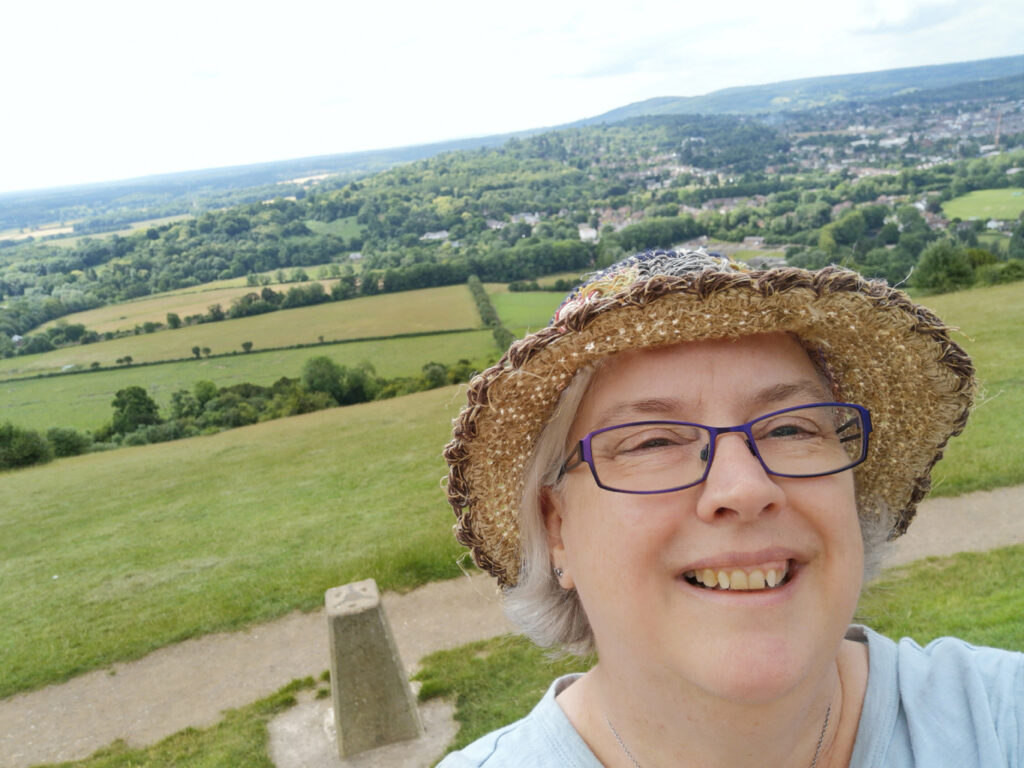
Me on top of Box Hill! (Unlike the fit young Keats, I drove up...) 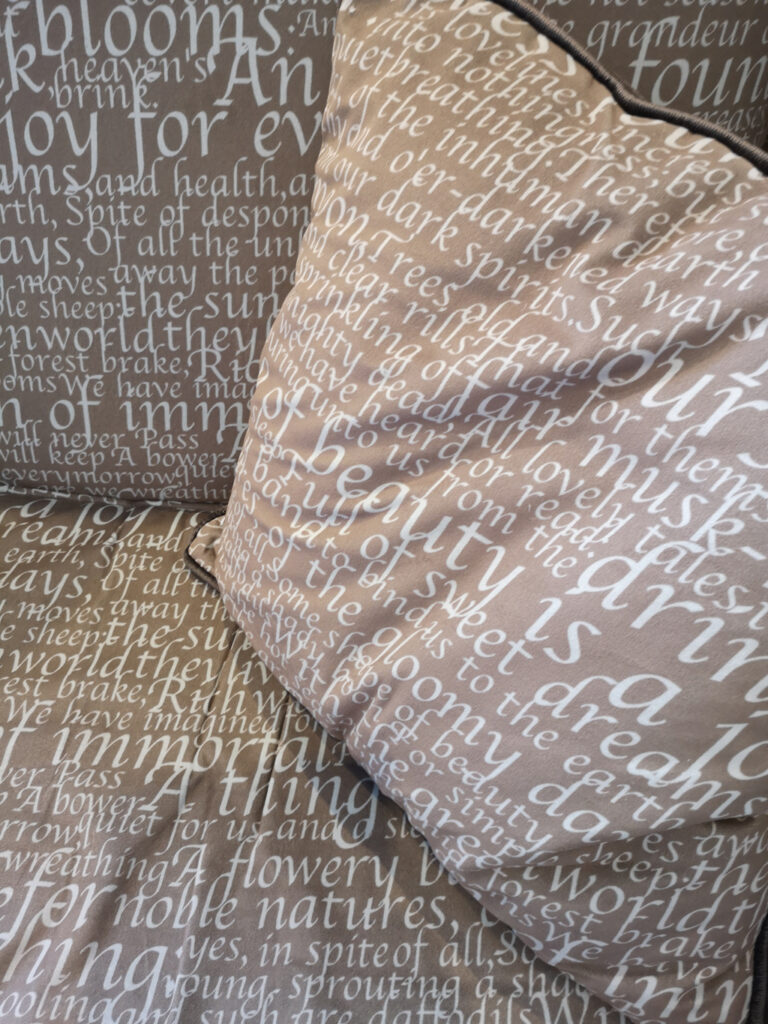
The comfy chairs featuring Keats' Endymion. 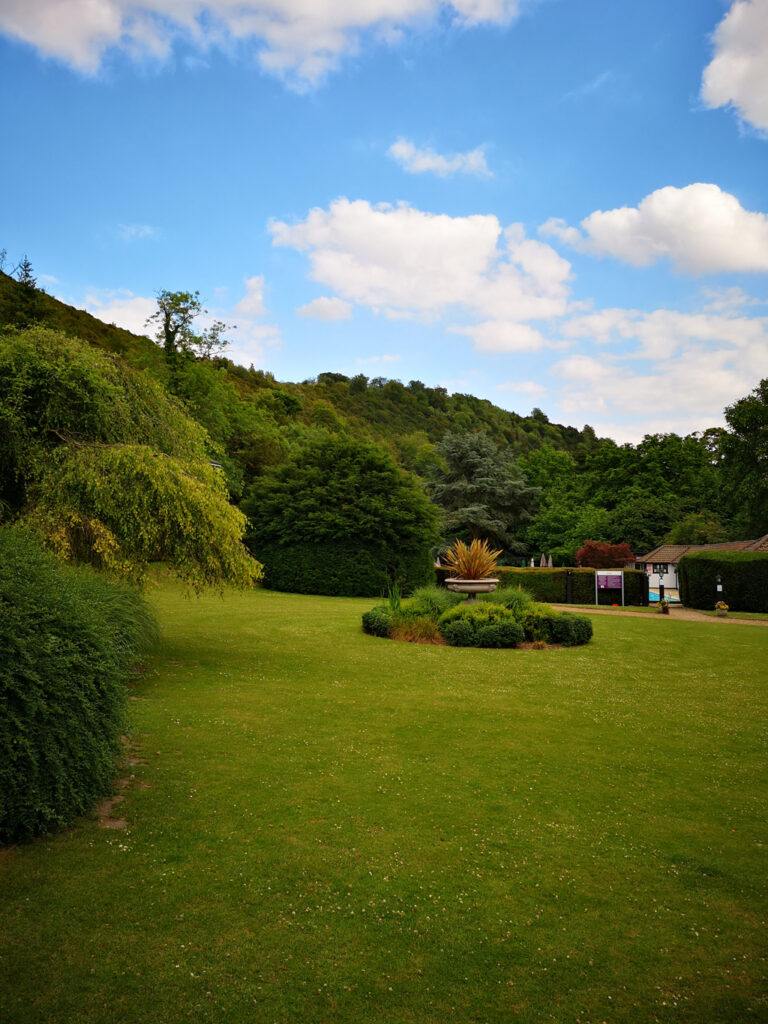
From the garden, looking up to Box Hill. 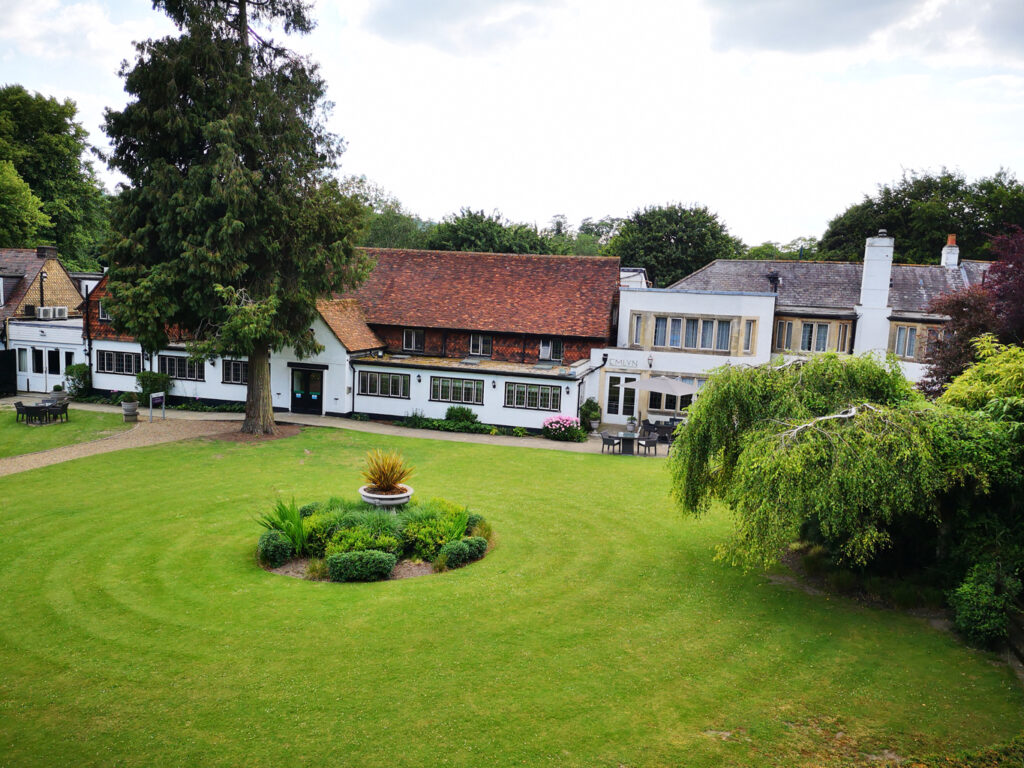
The building on the right is the back of what Keats would have known. However, the extensions with sandstone-pillared windows date from after his time.
Burford Bridge, Mickleham, Surrey
John Keats stayed at the Fox and Hounds (now the Burford Bridge Hotel) at the foot of Box Hill while finishing his poem “Endymion”.
The Keats Connection
Keats needed to write another 500 lines to finish his epic poem “Endymion”, and at the time London was both boring and too distracting. His brothers Tom and George planned to travel to Teignmouth in Devon for the sake of Tom’s health. In the meantime, John travelled alone to Burford Bridge, near Dorking in Surrey.
He seems to have been immediately invigorated by the lovely location. In his biography of Keats, Andrew Motion tells us:
When [Keats] climbed down from the Portsmouth coach on the evening of Saturday 22 November [1817], he immediately liked what he saw: a low, white-washed building fronted with a row of elms; the river Mole winding nearby; woodland stretching to the horizon. Renting a small room overlooking the stable yard, he climbed the twilit hill – Box Hill – beyond the garden, then returned to write ‘some lines’, and letters to Reynolds and Bailey.
I am not sure where Motion got the information about Keats’ room overlooking the stable yard (and I don’t know where the yard was, though one assumes at the side or rear of the inn). Having dug around in plans and reports and whatnot, I can say that the inn was considerably smaller than it is now. All kinds of extensions have been added over the years, and the original building(s) have been almost swallowed up.
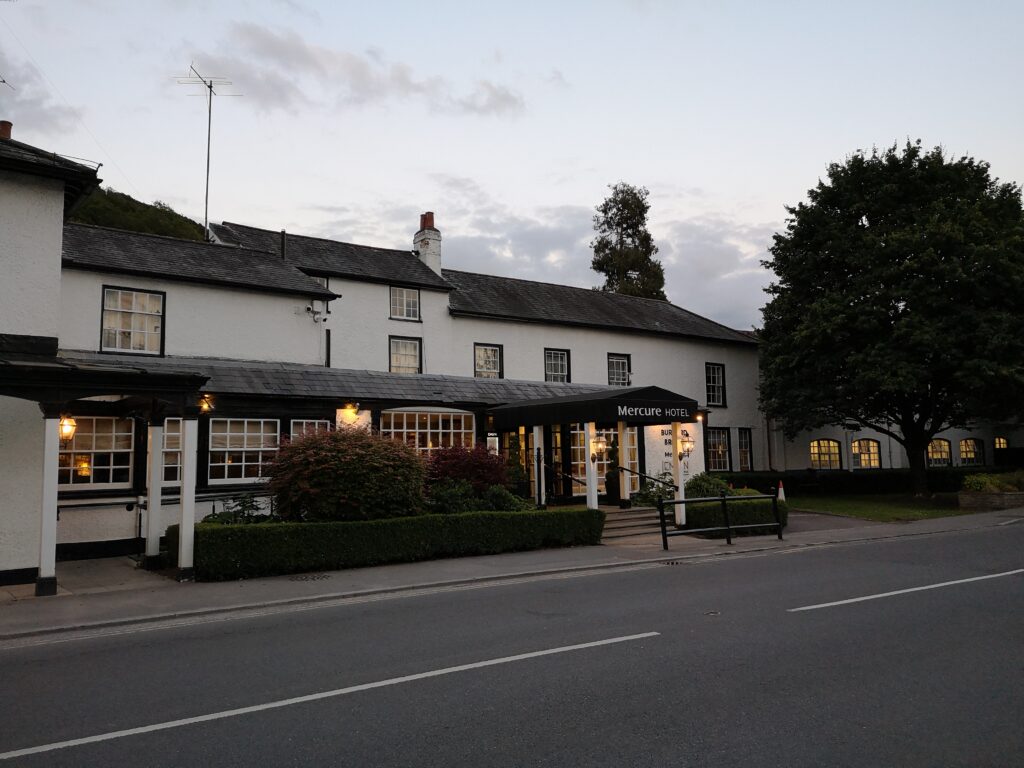
But back to Keats himself. The letters mentioned by Motion include some of Keats’ most moving and significant thoughts. The letter to Bailey includes the lines:
I am certain of nothing but of the holiness of the Heart’s affections, and the truth of Imagination. What the Imagination seizes as Beauty must be truth — whether it existed before or not — for I have the same idea of all our passions as of Love: they are all, in their sublime, creative of essential Beauty.
In the letter to Reynolds, he seems bubbling over with happiness at being where he is. His twilit hunt for the Moon was particularly relevant, as she was both his muse and Endymion’s love.
I like this place very much. There is Hill and Dale and a little River. I went up Box hill this Evening after the Moon — ‘you a’ seen the Moon’— came down, and wrote some lines.
To Reynolds he talks of “the fine point of his soul”, which I borrowed as a title for my novel on Keats’ last months:
… why don’t you, as I do, look unconcerned at what may be called more particularly Heart-vexations? They never surprise me — lord! a man should have the fine point of his soul taken off to become fit for this world.
Keats did indeed finish off his poem “Endymion” while staying in Burford Bridge – and he must have written at a great rate, as he finished the first draft on 28 November, less than a week after he arrived.
He was back in Hampstead, London by 5 December.
Before and In Between
This beautiful area has attracted many visitors, including some of note. Jane Austen visited friends who lived near Burford Bridge, and crafted a key scene of her novel Emma (1816) around a picnic on Box Hill. Apparently Admiral Lord Horatio Nelson and Emma, Lady Hamilton stayed in the hotel itself, and it is claimed that Nelson spent his last night in England here.
Other names associated with the area include John Evelyn, Celia Fiennes, M d’Arblay (who married Fanny Burney), RL Stevenson, George Meredith, John Stuart Mill, William Wordsworth, and William Hazlitt.
Today
Burford Bridge Hotel is now a four-star hotel owned by the Mercure chain. Suffice to say, I suspect Keats would hardly recognise it!
I am pretty sure that if you’re staying in rooms 200-207, you’ll be in the part of the hotel that Keats would have known. More detail than that I cannot provide!
Severe flooding in December 2013 brought forward the hotel’s renovation plans, and they made the most of their literary heritage. A quote from Austen’s Emma now adorns a wall in the restaurant, and two chairs in the foyer are upholstered with lines from Keats’ “Endymion”.
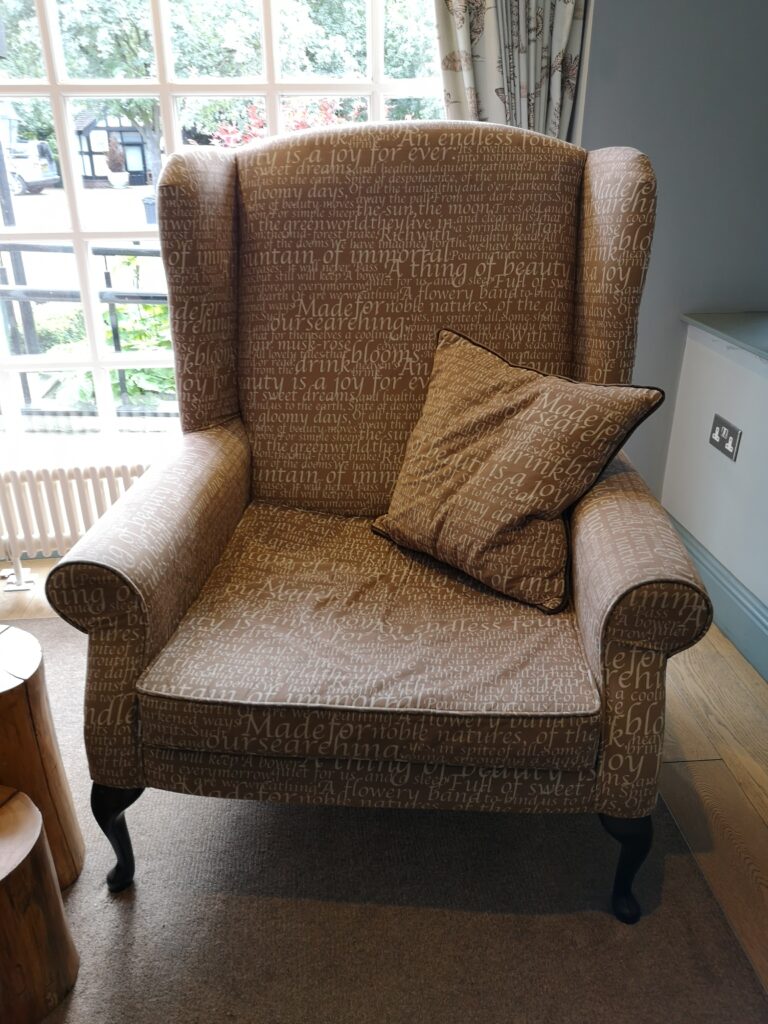
Details
- Address: Burford Bridge Hotel, London Road (A24), Dorking RH5 6BX
- Opening hours: open all year round
Links
- Burford Bridge Hotel official site on Accor Hotels website
- Burford Bridge Hotel page on Wikipedia (not very detailed)
Margate, Kent
John Keats stayed in Margate twice, partly for relaxation and health reasons, and partly as a writing retreat.
The Keats Connection
After passing his apothecary’s examination, John Keats felt he had earned a holiday. Also, his younger brother Tom was increasingly unwell, with symptoms indicating consumption. The seaside town of Margate in Kent was an obvious choice of resort for these Londoners, as it was readily and cheaply accessible via steamship down the River Thames. (In his biography of Keats, though, Andrew Motion suspects that John and Tom travelled there by coach.)
John and Tom stayed in Margate for a number of weeks from August through September 1816. We don’t know the exact dates – and we don’t know where they stayed, though Motion says “probably in rooms overlooking Hawley Square in the centre of the old town”. (The featured image for this post was taken in Hawley Square on a summer’s day.)
Keats wrote several poems and letters while he was there that were important to his development as a poet. He was obviously influenced by the sea and the cliffs; his sonnet “To My Brother George” includes the lines:
The ocean with its vastness, its blue green,
Its ships, its rocks, its caves, its hopes, its fears,—
Its voice mysterious, which whoso hears
Must think on what will be, and what has been.
In the following year, John Keats set himself the task of writing the epic poem “Endymion”. He went to the Isle of Wight in order to write in seclusion, but this proved an unsatisfactory location for the purpose. Within a week or so he had travelled to the familiar Margate instead, and stayed there from late April to mid May 1817.
His brother Tom joined him again in Margate, and from there they moved to Canterbury.
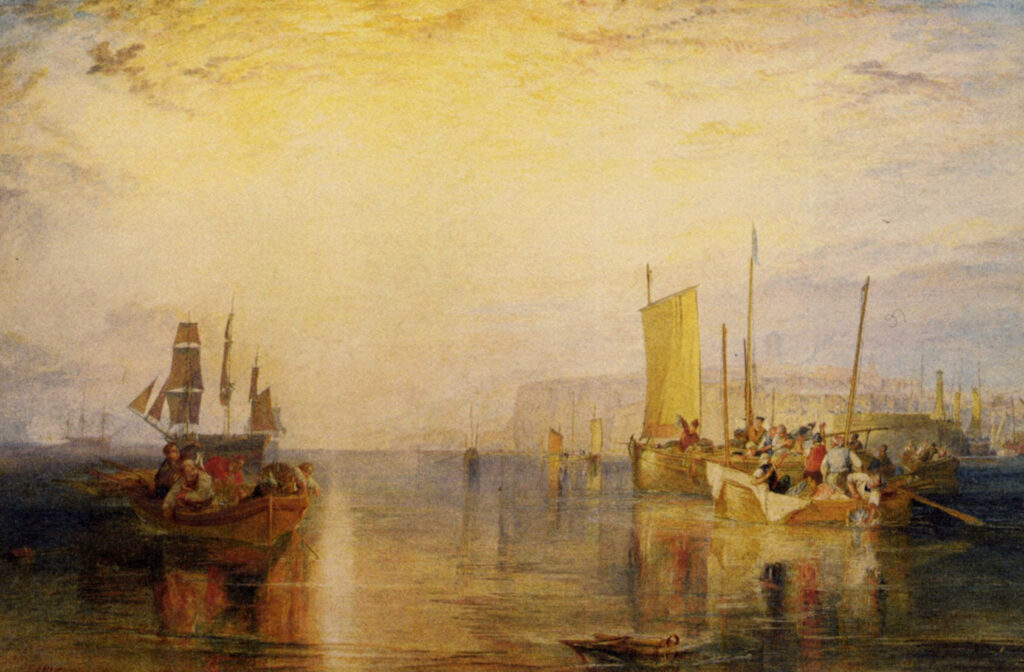
Today
While Margate has become a tad shabby following a decline in local industry and tourism, there is still much to attract here – and there is a whole heap of history and lovely countryside in the near vicinity. As someone might have already observed, Kent is always a good idea. Even where there is no precise Keats location to visit.
Details
- Address: Hawley Square, Margate, Kent CT9 1PF
- Opening hours: There’s no denying that the summer holidays are the only busy season, but the seaside is intriguing in any weather. And you can enjoy the pleasant park of Hawley Square at any time, while respecting the rest and privacy of the inhabitants.
Links
- Visit Thanet official tourism website
- Turner Contemporary official website, commemorating J.M.W. Turner’s association with the area
- Margate page on Wikipedia
Nearby
Canterbury: John and Tom moved from Margate to Canterbury in mid May 1817, and stayed there for a week or a little longer, before finally returning to Hampstead, London in June. We don’t have any details about exactly where they stayed, so I don’t anticipate creating a separate post for Canterbury.
Keats seemed to move to a new location whenever he got stuck with writing “Endymion”. In a letter of 16 May to his prospective publishers Taylor and Hessey, Keats says, “At Canterbury I hope the remembrance of Chaucer will set me forward like a Billiard Ball.”
Eastgate Square, Chichester, West Sussex
John Keats was staying with the parents of his friend Charles Dilke in their house on Eastgate Square, Chichester, when he began writing his poem The Eve of St Agnes.
The Keats Connection
John Keats joined Charles Brown in Chichester in January 1819, to stay with the elderly parents of their friend Charles Wentworth Dilke. Keats and Brown were only there for a few days before moving to nearby Bedhampton to stay with the Snook family, parents-in-law to Charles Dilke’s sister Letitia.
During this time, Keats was writing the first draft of his poem “The Eve of St Agnes”. The poem’s medieval setting was influenced by the beautiful old architecture of Chichester.
The Dilkes’ home was just outside the city walls, facing the East Gate. Keats visited the Gothic cross in the town square, and took a letter from Fanny Brawne to the 12thC cathedral so he could read it in privacy.
Today
There is a plaque on the building commemorating Keats’ stay, directly above what is now St Wilfrid’s Hospice Retro and Vintage Store at 11 Eastgate Square. It reads:
Here John Keats began to write The Eve of St Agnes 1819
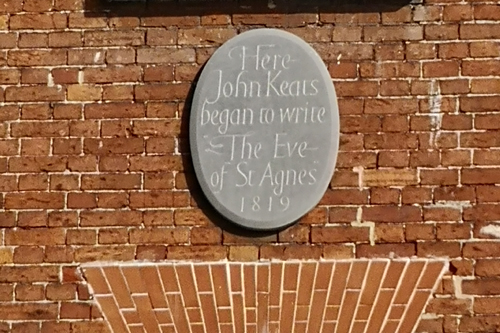
There is also a statue of Keats, sitting on a bench just over the road, created by sculptor Vincent Gray and unveiled in August 2017. Behind it, a low stone wall winding along the roadside bears a quote from his poem, “When I have fears that I may cease to be”:
When I behold, upon the night’s starred face,
Huge cloudy symbols of a high romance
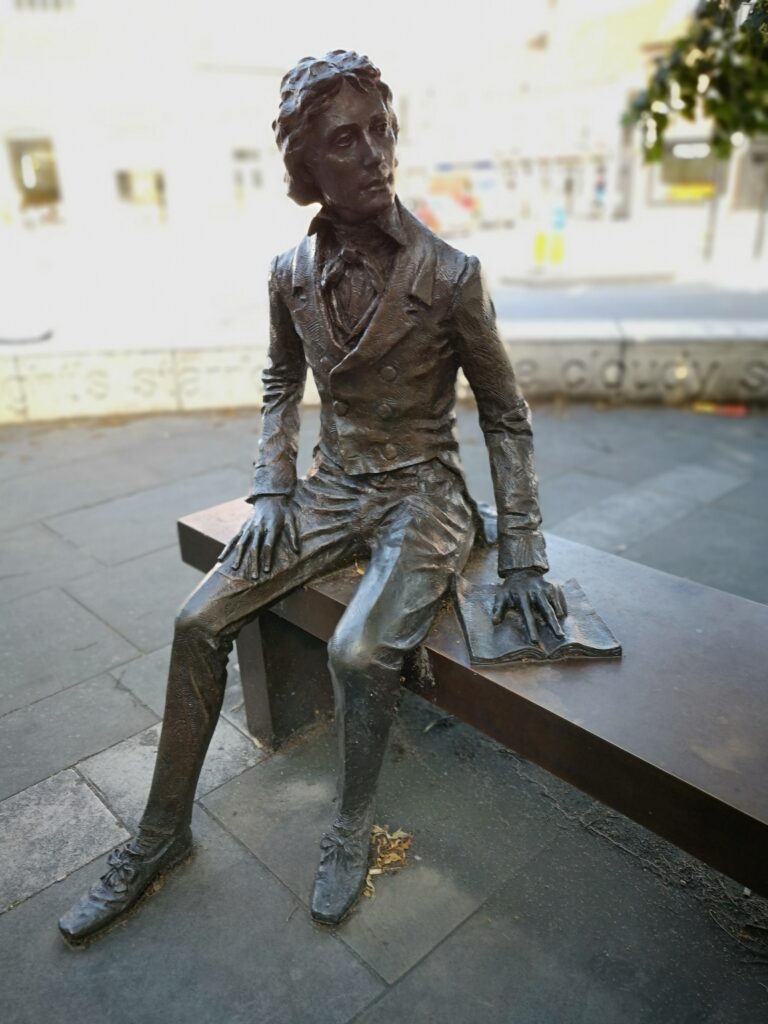
Chichester is an idyllic English city, surrounded by beautiful countryside, and well worth a visit in its own right.
Details
- Address: 11 Eastgate Square, Chichester, PO19 1JH
- Opening hours: The plaque and sculpture can be viewed at any (reasonable!) hour
Links
- Vincent Gray’s official website
- Chichester page on Wikipedia
Nearby
- Bedhampton
- Stansted Park
mementos | locks of Keats’ hair
It has been (and perhaps still is?) common practice for people to keep a lock of hair from a loved one as a memento. John Keats’ friend Leigh Hunt was particularly interested in doing so.
There are two locks of Keats’ hair that I know of, both taken by Hunt.
One lock is on display at the Keats-Shelley Memorial House in Rome. I’m afraid my photo of it is a tad out of focus, as of course it is kept safe under glass, but this will give you an idea!
I was particularly struck by the reddish tint still obvious in his mid-brown locks. Keats’ personal beauty was often remarked upon by his friends, and here is proof enough that his thick head of curly / wavy hair was indeed attractive. Mind you, I always did have a thing for redheads.
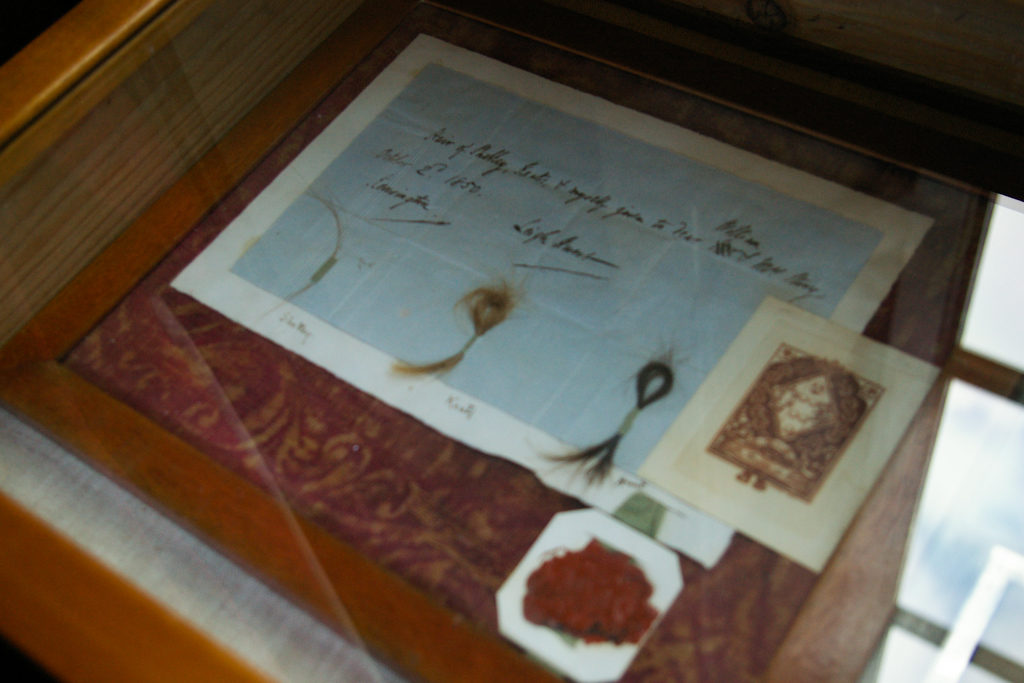
A second lock taken by Hunt was included in an album he owned, along with twenty other locks from authors and public figures. This album is now held by the University of Texas in Austin, USA. I am very grateful to the University for making the whole album viewable online – this link will take you to the exact page.
There are notations, presumably by Hunt, that he took “two locks” and that this one is “the later lock”. I am not sure that we have exact dates for either, but will look into it. The album included a (supposed) lock of Milton’s hair. Keats was inspired by viewing this to write the poem “Lines on Seeing a Lock of Milton’s Hair”, so he would have been delighted to have his own lock included in the same album.
The page includes a print of the drawing Severn did of Keats on his death bed in Rome, with the caption, “The last life sketch of Keats, by his friend Joseph Severn.” (Note that Keats’ year of birth, which was 1795, is given incorrectly here as “1796”.)
Again, the reddish-brown colour of this lock is striking. This was the generation before photographs became widely available – but these locks of hair, along with the life and death masks taken of Keats, enable us to feel confident of his appearance. You probably realise by now that I think he was a handsome fellow! ♥
Links
- Sentimental Hair article on Infringe website
- Lock of hair page on Wikipedia
gallery | Southwark
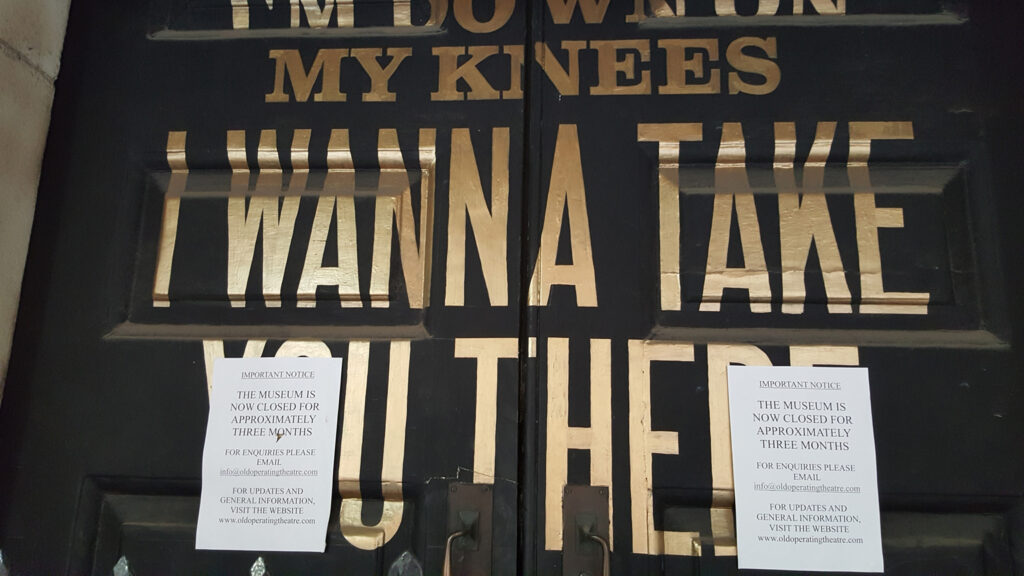
Outside the Old Operating Theatre Museum and Herb Garret. Not sure why, but the main doors feature Madonna lyrics painted in gold! 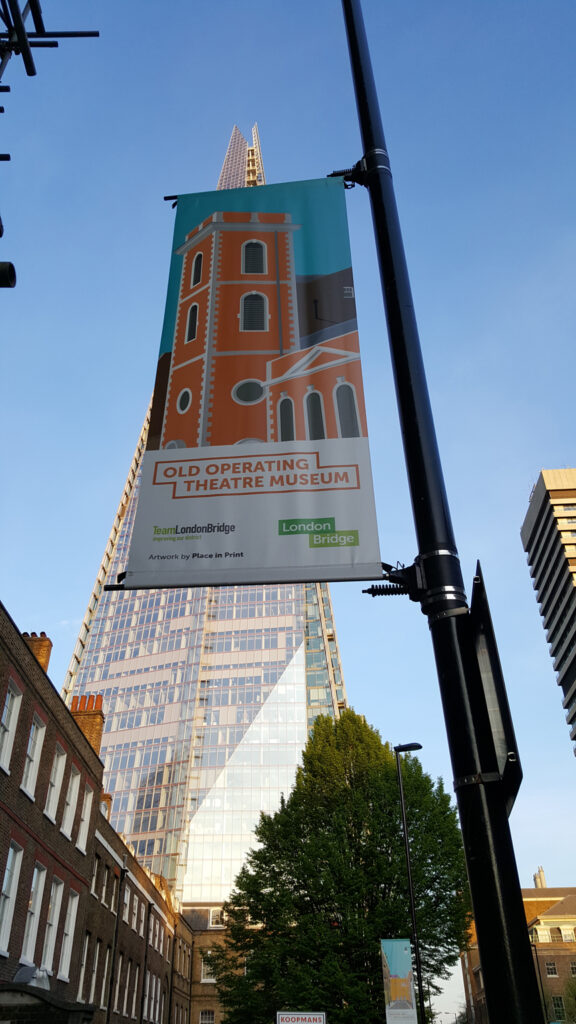
Outside the Old Operating Theatre Museum and Herb Garret. I think Keats would have been astonished by the Shard! 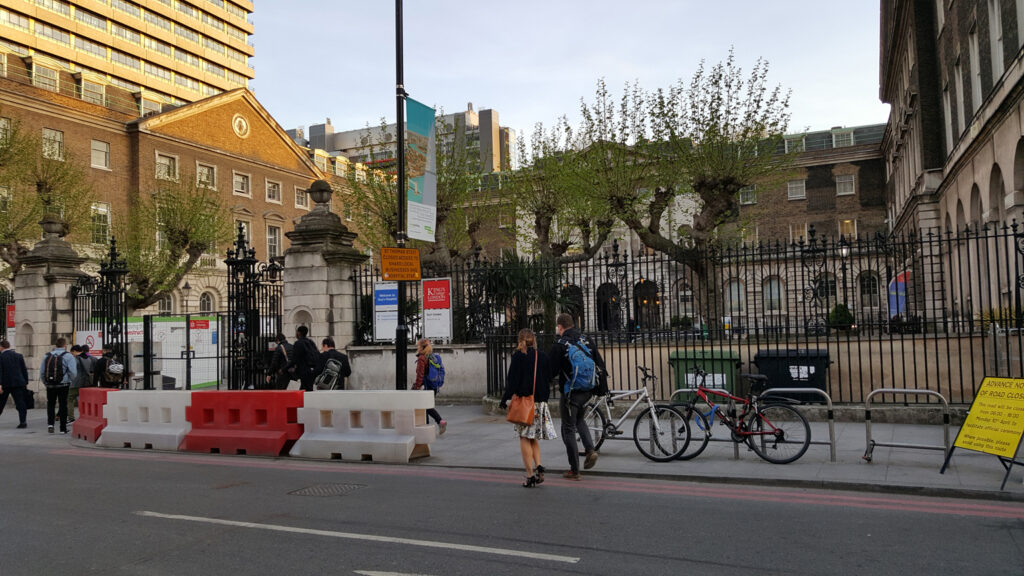
The Guy’s Hospital courtyard during renovations. 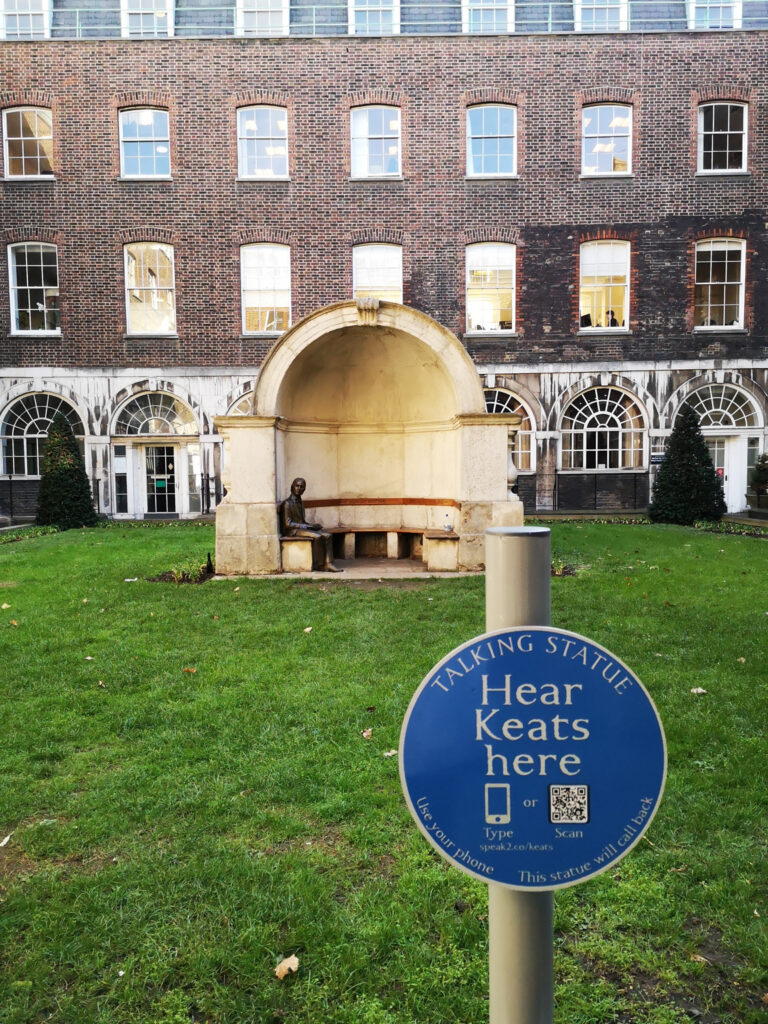
The Keats statue at Guy’s Hospital. 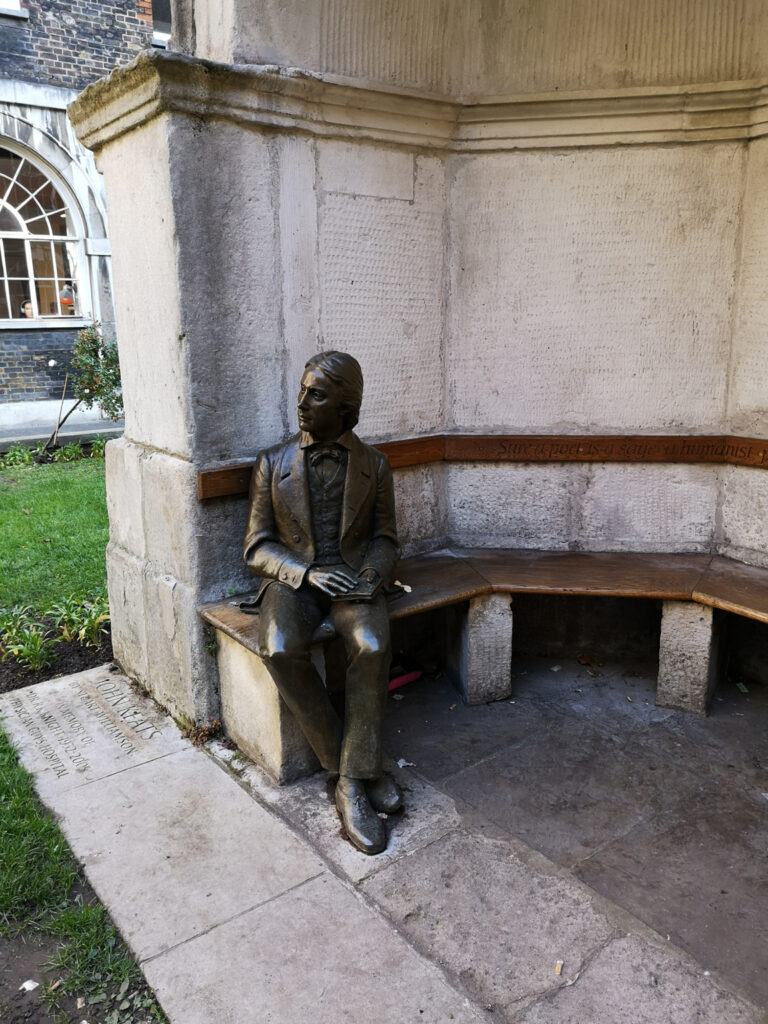
The Keats statue at Guy’s Hospital. 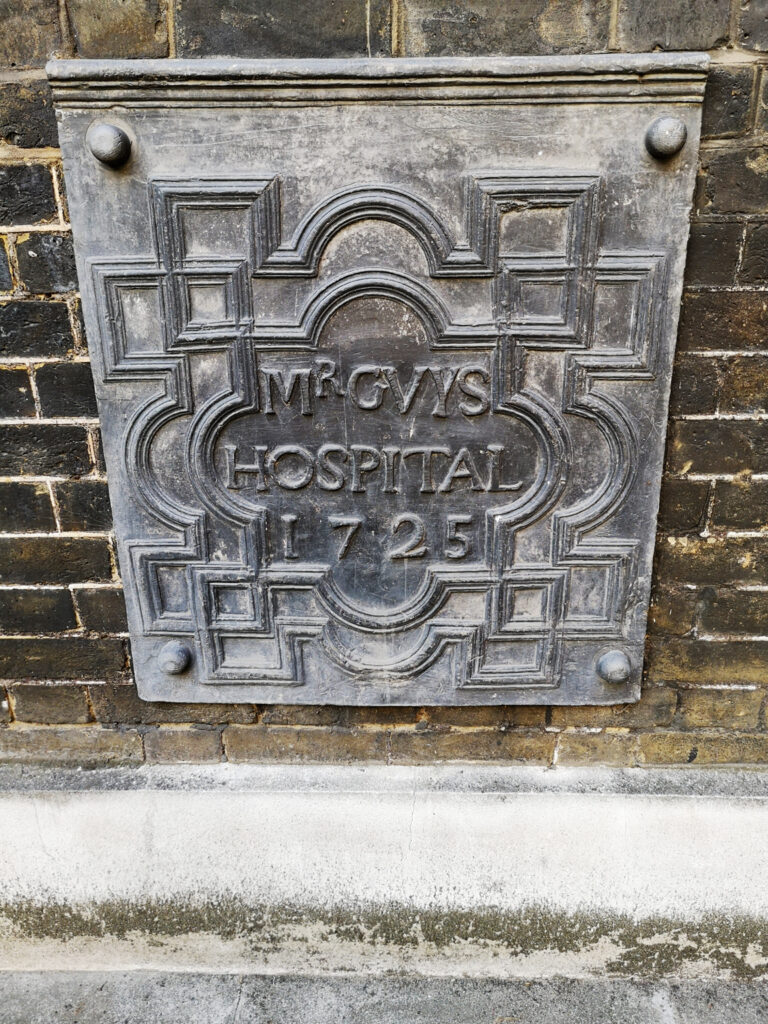
Guy’s Hospital. 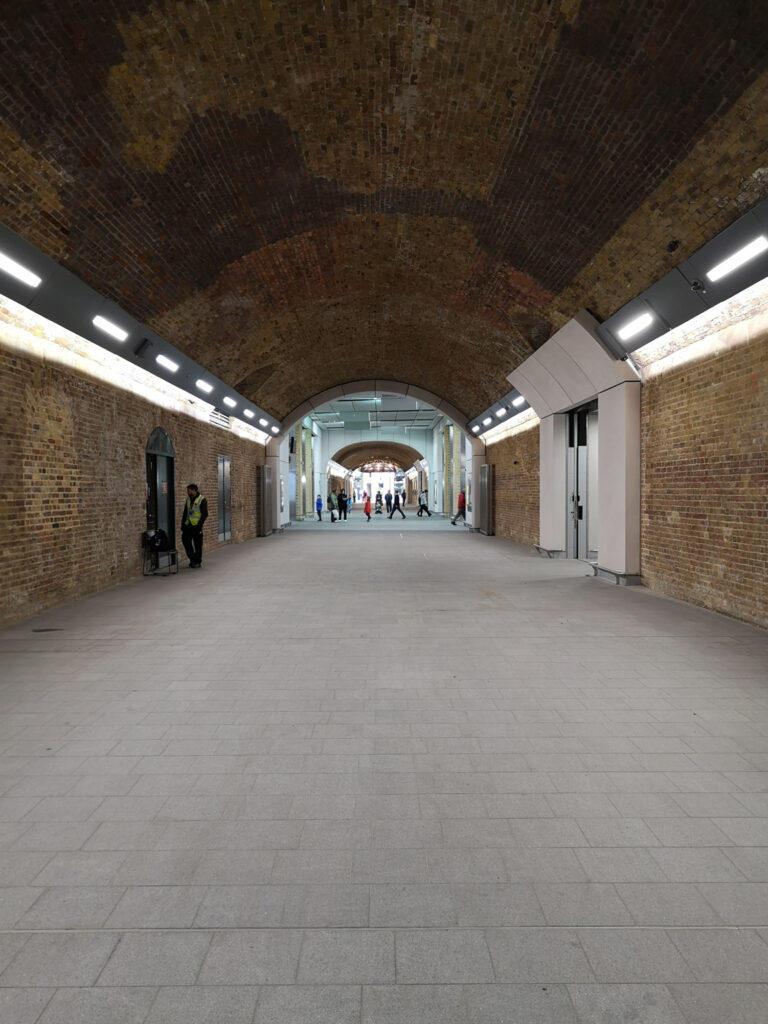
Stainer (formerly Dean) Street, Southwark. 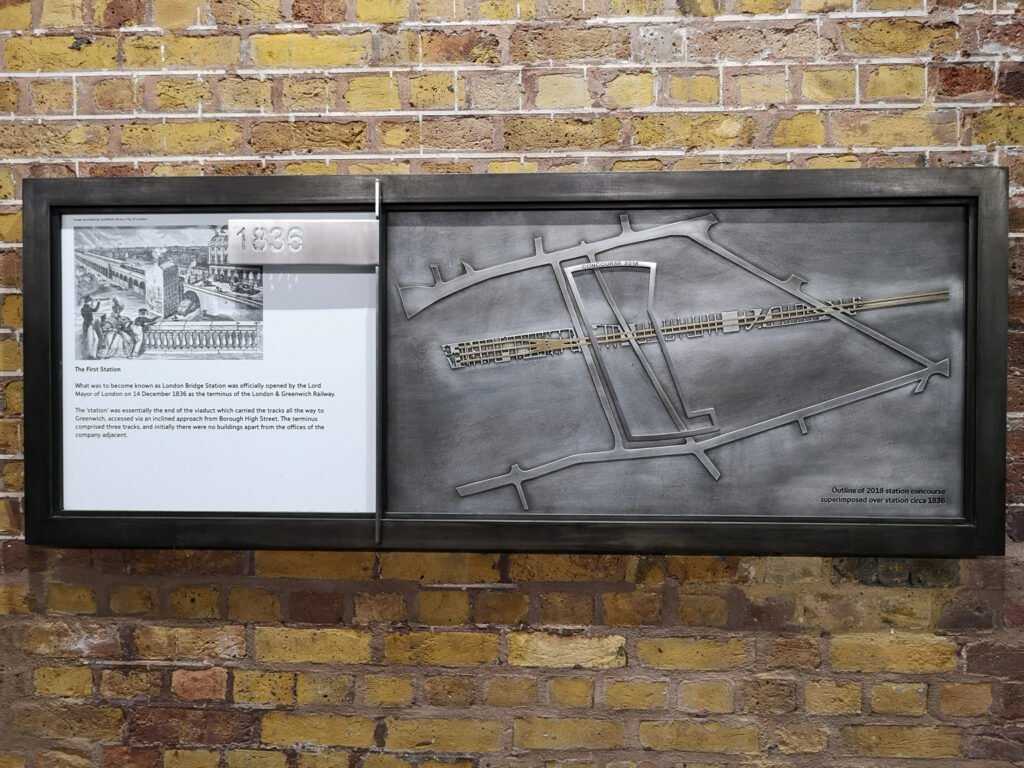
Stainer (formerly Dean) Street, Southwark. Display showing the location of the first railway lines in 1836. Dean St runs up along the left of the new station concourse. 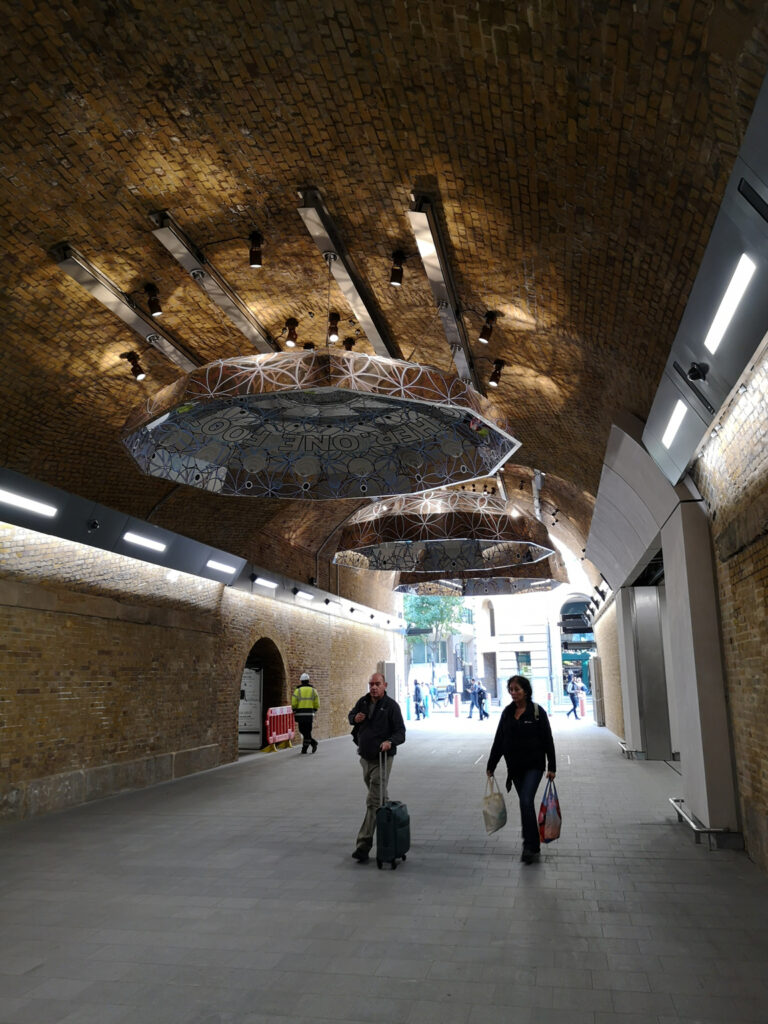
Stainer (formerly Dean) Street, Southwark, looking towards Tooley Street. 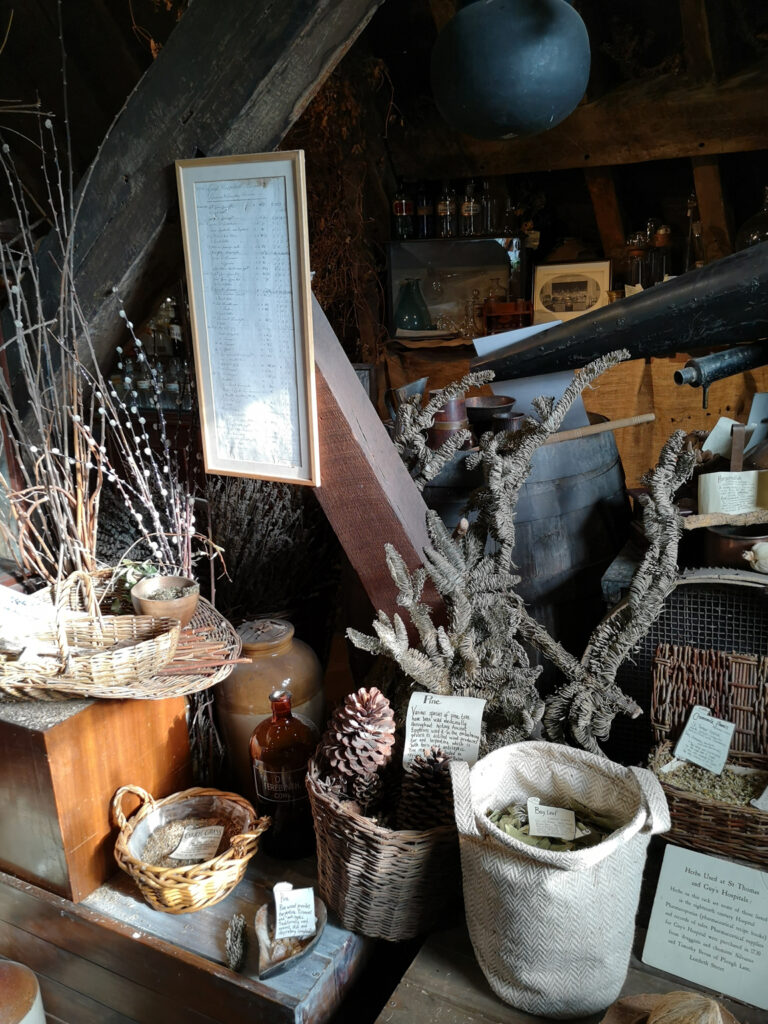
The Old Operating Theatre Museum and Herb Garret. 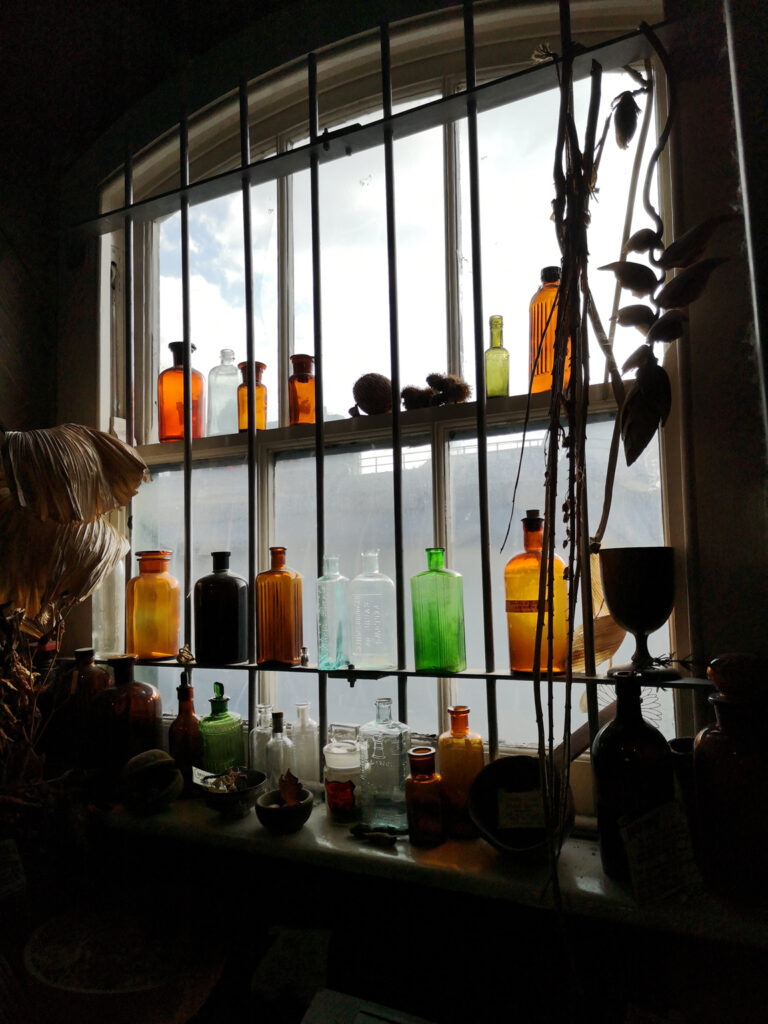
The Old Operating Theatre Museum and Herb Garret. 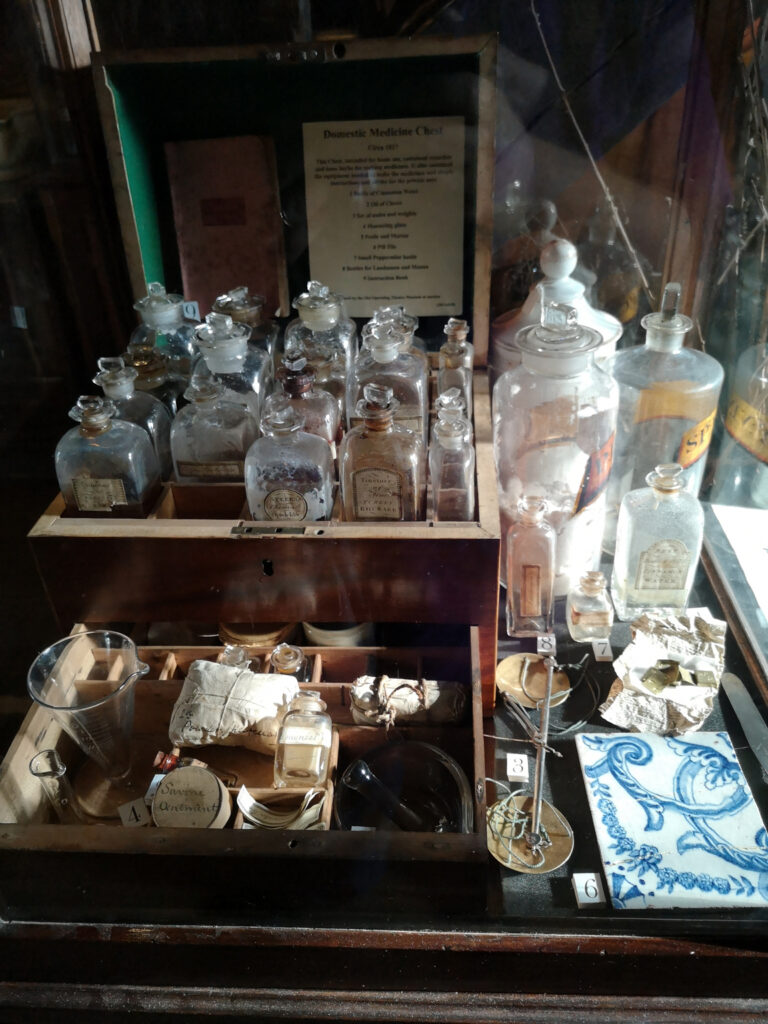
The Old Operating Theatre Museum and Herb Garret. 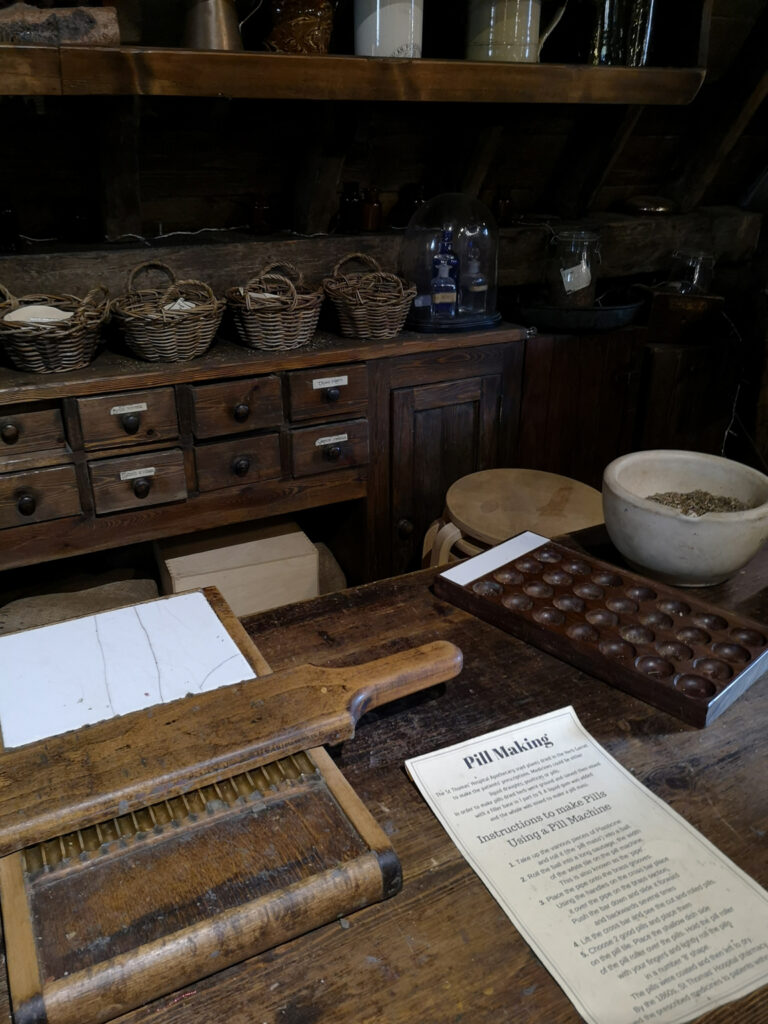
The Old Operating Theatre Museum and Herb Garret. 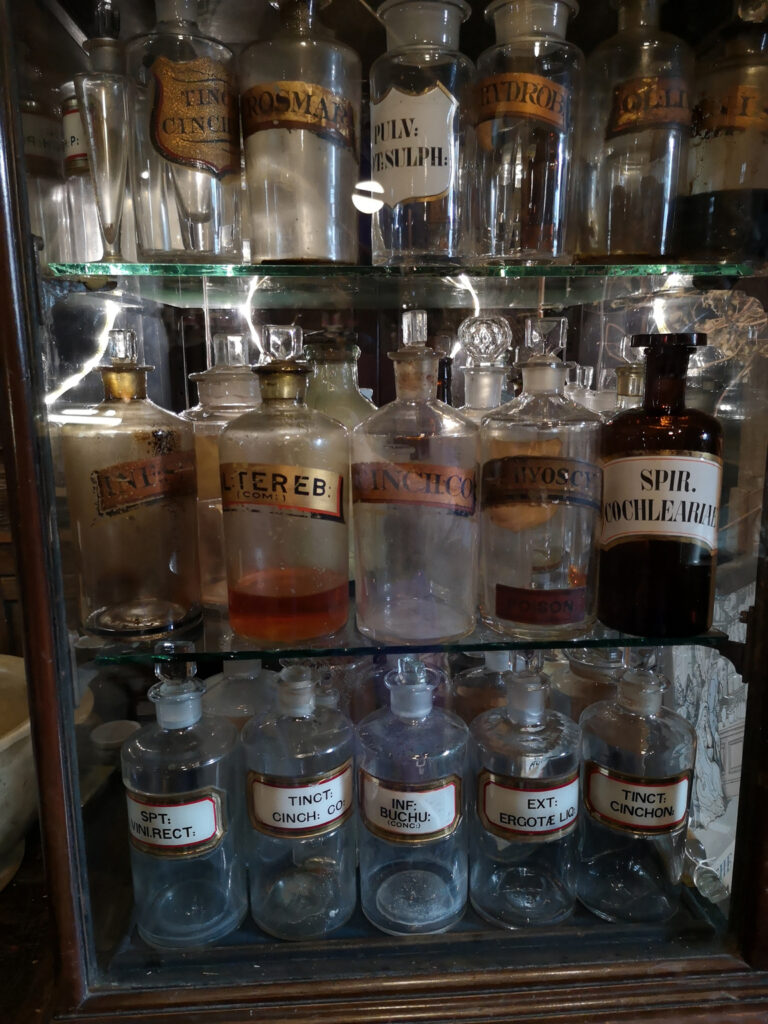
The Old Operating Theatre Museum and Herb Garret. 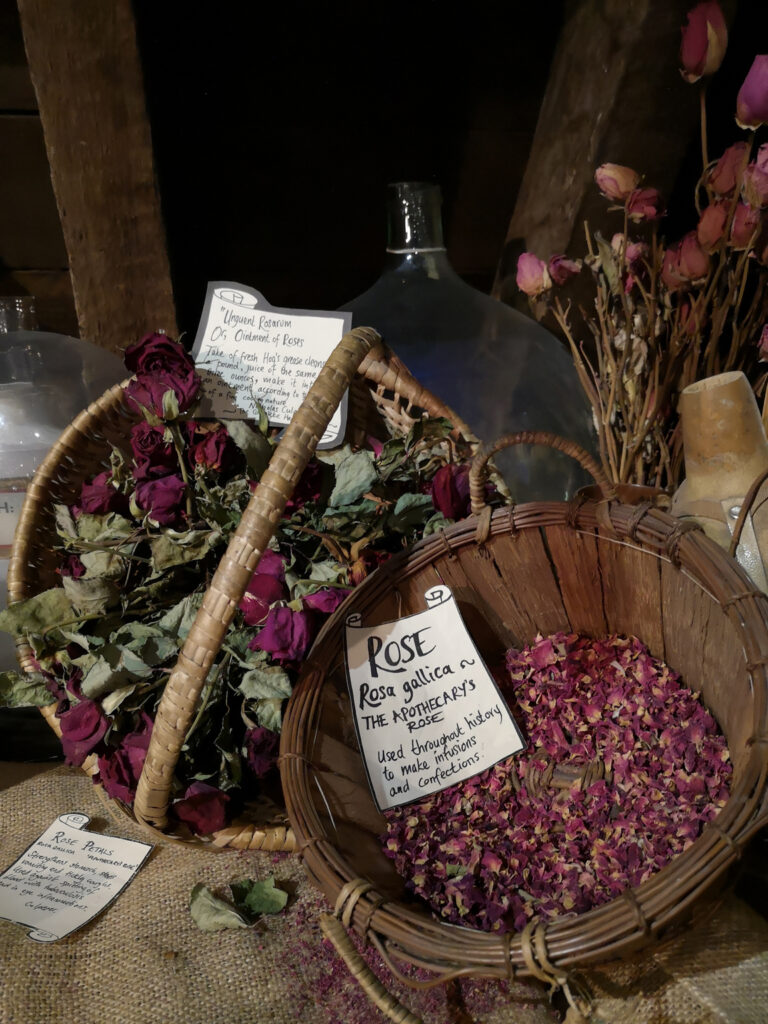
The Old Operating Theatre Museum and Herb Garret. 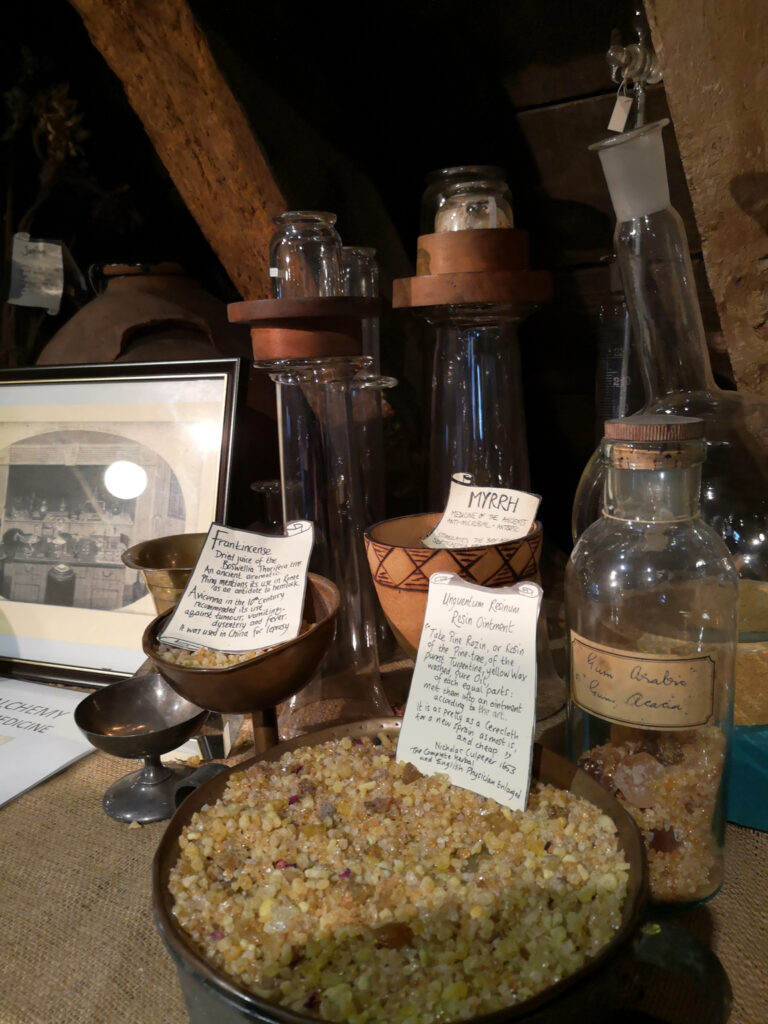
The Old Operating Theatre Museum and Herb Garret. 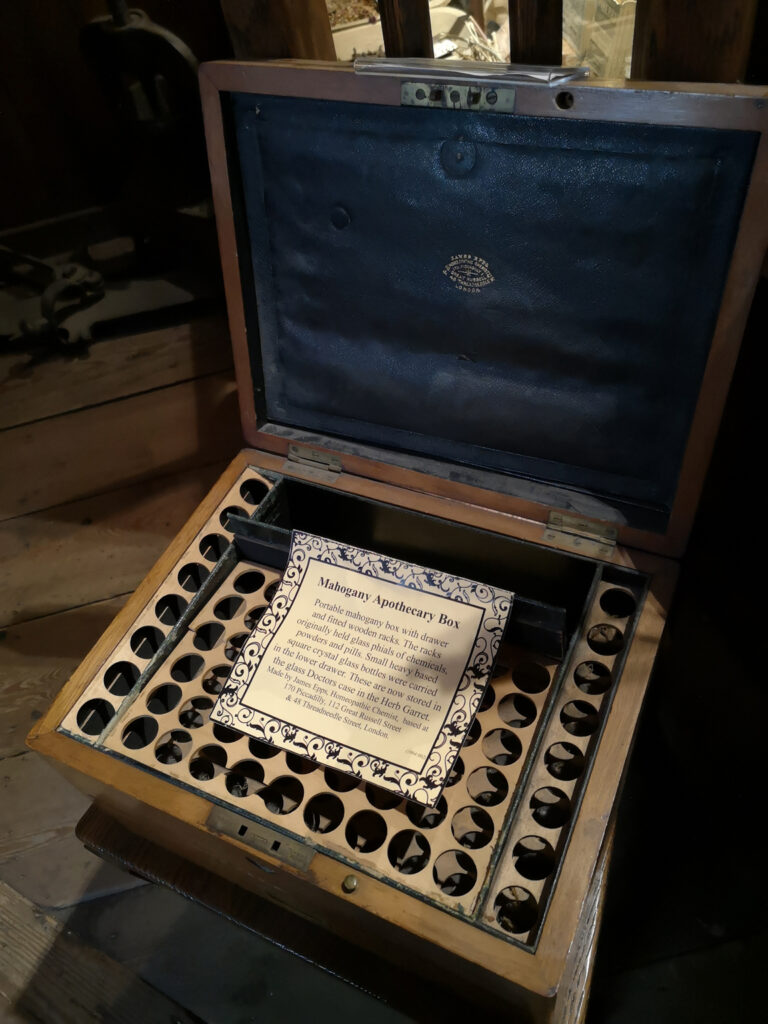
The Old Operating Theatre Museum and Herb Garret. 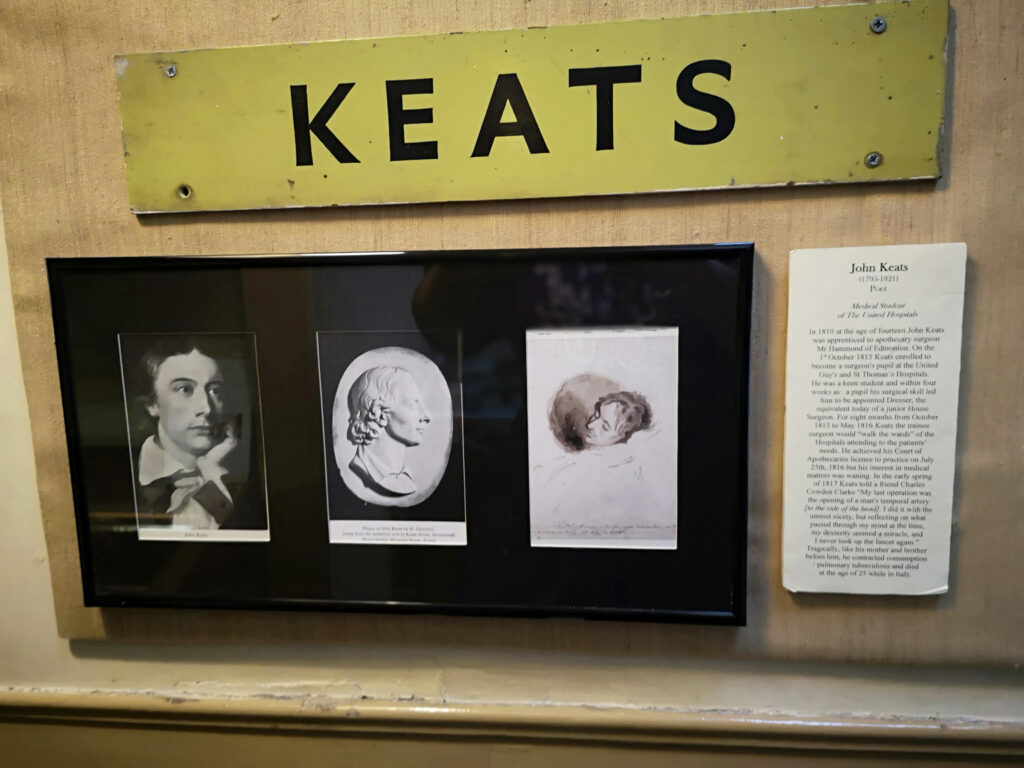
The Old Operating Theatre Museum and Herb Garret. Display on Keats. 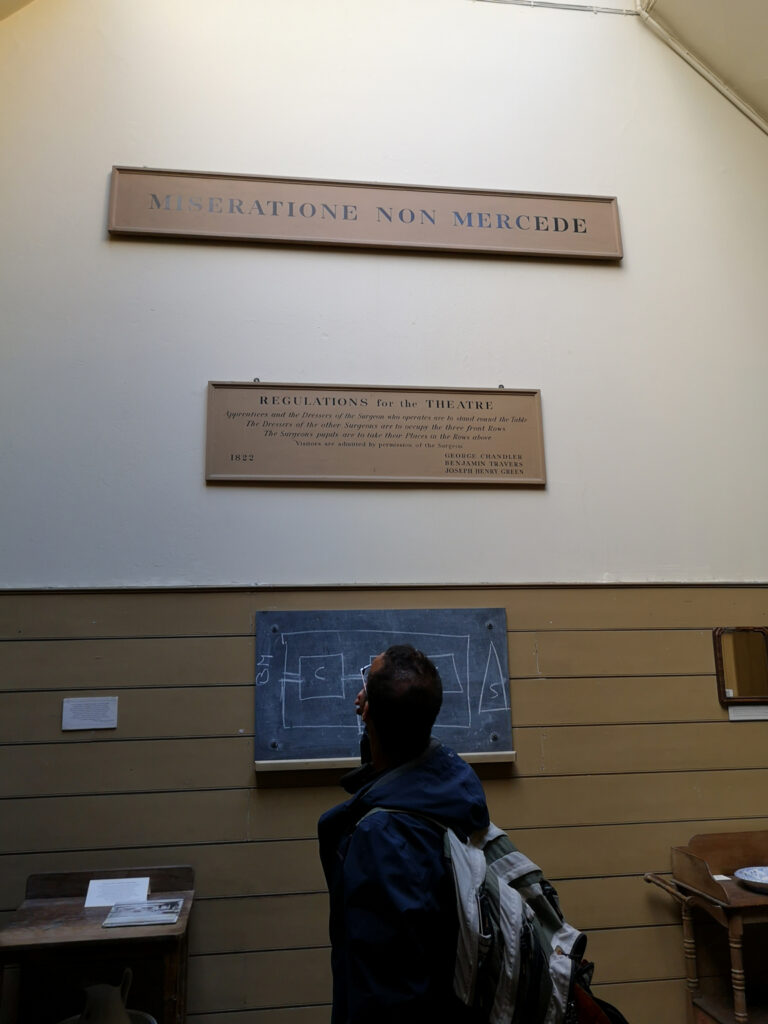
The Old Operating Theatre Museum and Herb Garret. “Miseratione non Mercede” means “For compassion not for gain”. 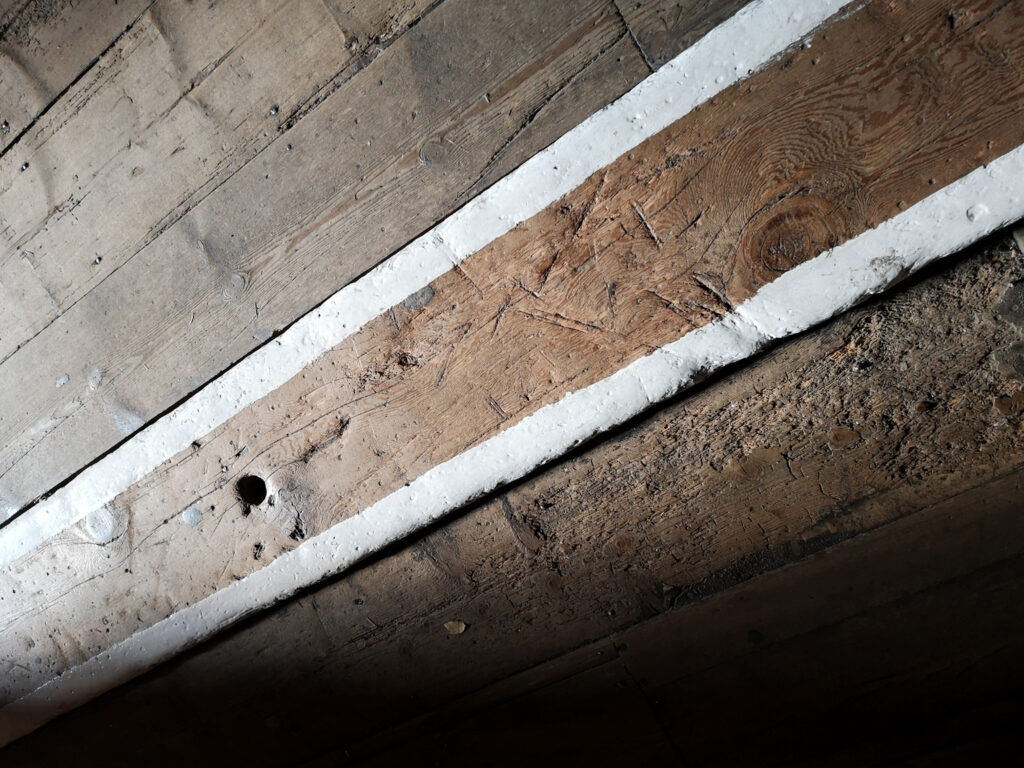
The Old Operating Theatre Museum and Herb Garret. It’s easy to imagine Keats here when looking at such old timbers.
8 Dean Street, Southwark, London
John Keats wrote his first significant poem while lodging at 8 Dean Street, Southwark.
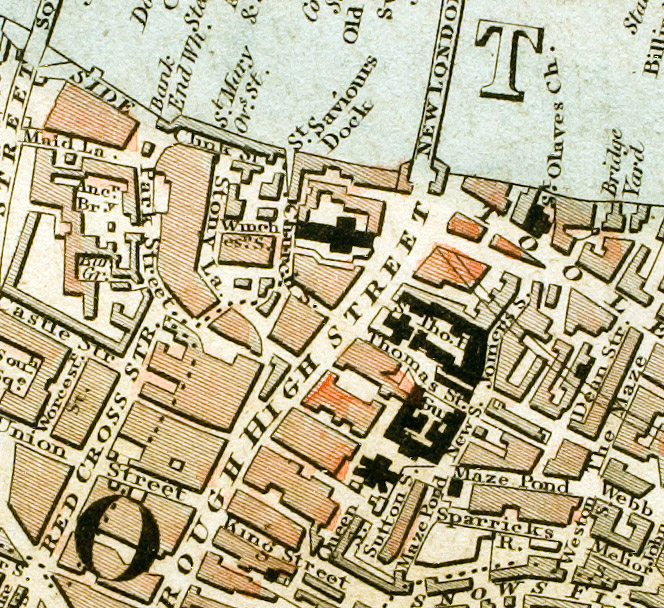
The Keats Connection
Keats moved to lodgings at 8 Dean Street in late September 1816, on returning from a holiday in Margate with his youngest brother Tom. Keats was returning to London in order to take up his studies at nearby Guy’s Hospital.
Keats lived at the Dean St lodgings on his own, though the original plan had been for Tom to live there with him. Instead, Tom went to live with the middle brother George.
On 9 October 1816 Keats wrote to his friend Charles Cowden Clarke, giving Clarke directions to visit him. Keats wrote:
Although the Borough is a beastly place in dirt, turnings and windings; yet No 8 Dean Street is not difficult to find; and if you would run the gauntlet over London Bridge, take the first turning to the left and then the first to the right and moreover knock at my door which is nearly opposite a Meeting.
(The “Borough” is the Borough of Southwark, and the “Meeting” would have been a meeting house for Quakers.)
Importantly, Keats wrote his first significant sonnet – “On First Looking into Chapman’s Homer” – at Dean St, having returned there early one morning after a long night of literary discussions with Clarke. I haven’t found an exact date for him writing the poem, but it was definitely in October, at Dean St.
Keats didn’t stay long at Dean Street; by mid-November 1816, he was living at 76 Cheapside, London with his brothers George and Tom.
In Between
Dean Street was later renamed Stainer Street, apparently in honour of Sir John Stainer (1840-1901), a composer and organist who was born in Southwark. (See the Street names of Southwark page on Wikipedia.)
On 17 February 1941, during the Second World War, a bomb fell on a railway arch over Stainer St, killing 68 and injuring 175 people who were sheltering there. There is now a blue plaque in their honour.
At some point, as the London Bridge railway station grew, the buildings where Keats lodged were demolished. Eventually, Stainer Street was blocked off and no longer accessible to the public. There are now no buildings other than sturdy brick arches between Tooley St and St Thomas St, supporting the many train tracks coming into London.
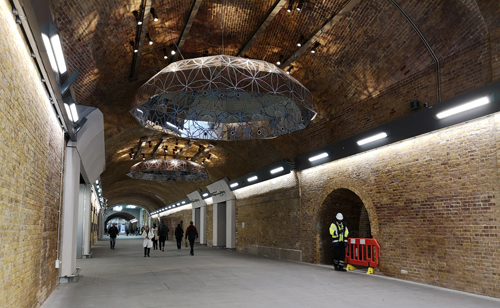
Today
Stainer Street was reopened in October 2018 as part of the new London Bridge station concourse, for pedestrian access only. There is nothing (yet?) acknowledging the connection with Keats.
There is a large, beautiful artwork on the arched ceiling towards the Tooley Street end of the concourse, called “Me. Here. Now.” by Mark Titchner, installed in 2018. The main photo above shows one of the pieces, in which the message reads, “Only the first step is difficult.” Intentionally or not, I feel this is delightfully appropriate for the Keats connection.
It seems that No 8 Dean Street was about halfway along Stainer Street, on the eastern side (i.e. towards the National Rail station and away from the Tube station). (See below for the reference.)
Confusions
The Tooley Street page on Wikipedia suggests that Keats’ Dean Street equates to the northern end of Weston Street, which “connected with Tooley Street opposite Hay’s Galleria”. However, the Schmollinger map clearly shows Dean Street running parallel to The Maze, on the west, and Weston Street running directly into The Maze.
Meanwhile, the map associated with the 9A, St Thomas Street heritage listing on Historic England (copied below) shows Stainer Street to the west of Weston Street (with no mention of The Maze). It seems clear to me that The Maze and Weston Street are connected, and that Stainer Street is what Keats would have known as Dean Street.
This is further supported by this map on the Mapping Keats’s Progress site, which also indicates that No 8 Dean Street was about halfway between Tooley and St Thomas Streets. (Unfortunately this site states incorrectly that George and Tom lived with John at this address, but it can be difficult not to let errors of assumption sneak in!)
I should add that I was first alerted to the Dean St / Stainer St connection by a Network Rail employee, who was looking for information about Keats in anticipation of the opening of the new concourse.
However, any further information would always be welcome!
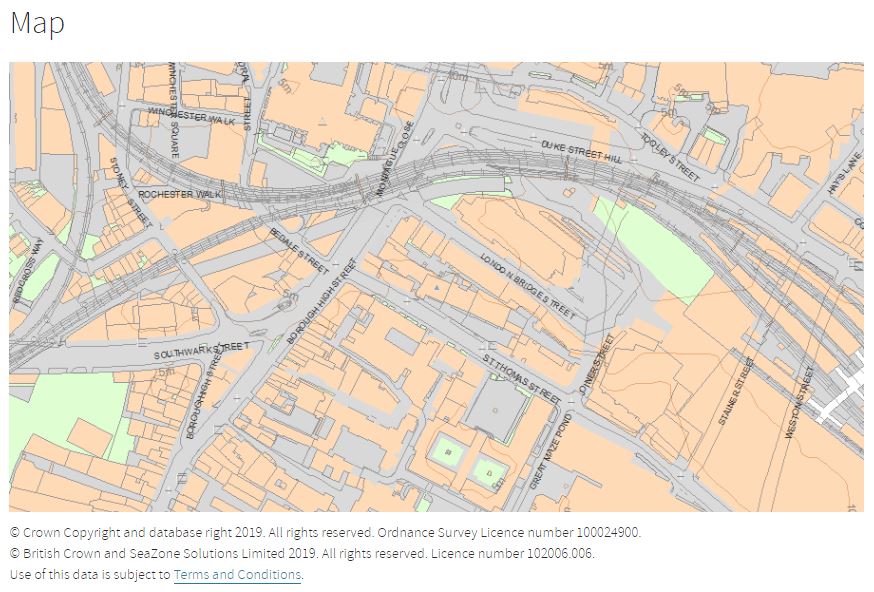
Updates!
I have since discovered the marvellous Layers of London website, which conclusively shows the location of 8 Dean Street, and the fact that it is now Stainer Street. The following images are taken using the 1799 map by Richard Horwood.
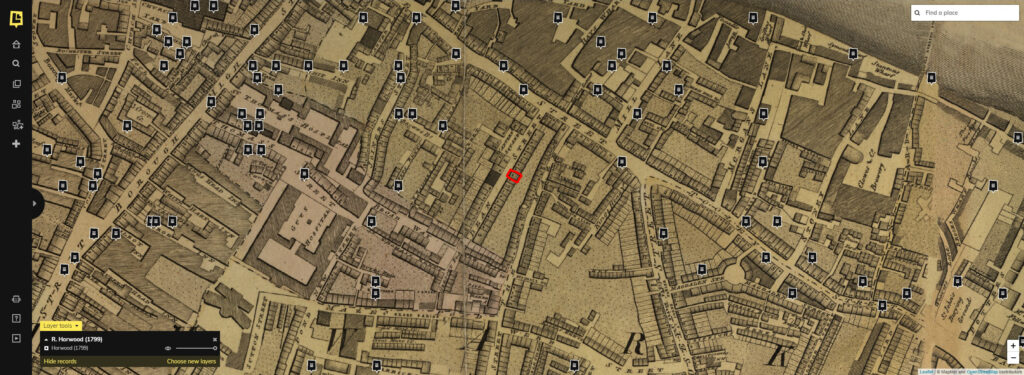

Details
- Address: Stainer Street, running between Tooley Street and St Thomas Street, London SE1
- Tube: London Bridge on the Jubilee and Northern lines
- London Bridge on National Rail
- Opening hours: the Stainer Street walkway is accessible 24/7, while the station concourse closes in the small hours each night while the trains aren’t running
Links
- London Bridge official site on Network Rail website
- London Bridge station map showing Stainer Street, on Network Rail website
- Re-activating Stainer Street article including mention of Keats, on ThamesLink Programme site
- Guy’s Hospital page including the Schmollinger map, on Wikipedia
- On First Looking Into Chapman’s Homer page on Wikipedia
- Keats’ letter to Charles Cowden Clarke, 9 October 1816
Nearby
- Other Keats Locations nearby include Guy’s Hospital, The Old Operating Theatre Museum and Herb Garret, and 8 St Thomas Street.
Guy’s Hospital, Southwark, London
John Keats studied medicine at Guy’s Hospital and qualified as an apothecary.
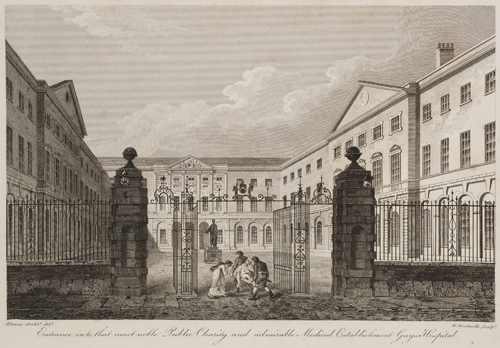
The Keats Connection
Keats completed his medical apprenticeship with Thomas Hammond, a doctor in Edmonton, in mid 1815. He then began studying as an apothecary-surgeon at Guy’s Hospital in Southwark, London. Guy’s Hospital was (and still is) a teaching hospital, associated with St Thomas’ Hospital.
Keats registered at Guy’s as a surgical student on 1 October 1815, and began working and studying there on 15 October. He qualified as an apothecary, but ended up deciding to quit medicine in late 1816, without becoming eligible to qualify as a surgeon.
Today
The courtyard entrance to Guy’s Hospital would still look very familiar to Keats, especially now it is pedestrian only (it used to be a car park).
If you walk across the courtyard and through the further colonnade, you’ll find two more squares opening up to either side. On the left, there is a statue of Keats himself, by Stuart Williamson, installed in 2007. I have sat there in the little shelter a few times, in search of peace.

Details
- Address: St Thomas Street, London SE1
- Tube: London Bridge on the Jubilee and Northern lines
- Opening hours: You can visit the statue during daylight hours. However, please be respectful of the hospital’s staff and patients!
Links
Nearby
- Keats lodged nearby at 8 St. Thomas Street and at 8 Dean Street
- Keats wouldn’t have known The Old Operating Theatre, but it would have been familiar to him, and he might have known the herb garret
